September 25, 2023 – Cape Elizabeth, Maine
Difficulty: Easy
Map: Fort Williams Park
Parking: Fort Williams Park – 1000 Shore Rd, Cape Elizabeth, ME 04107
- Fort Williams Park follows a carry-in/carry-out policy.
- Fort Williams Park is a public park that is open year-round from sunrise to sunset.
- From April 1 to November 15, there is a fee for parking in premium spaces in the park. Free parking is available in the Overflow Lot.
Overview:
Situated along the shores of Fort Williams Park in Cape Elizabeth, Portland Head Light sits at the entrance of the shipping channel into Casco Bay. A popular destination for those touring the area’s historic lighthouses or those simply looking for a quintessential coastal scene on their visit to Maine. The lighthouse, a commission of George Washington, is Maine’s oldest, dating to 1791.
Fort Williams Park is spread across more than 90 acres of recreational area, providing visitors with a plethora of activities to indulge in. You can plan a picnic, fly a kite, walk along the pathways, explore the rocky beach, tour the Arboretum, take a walk on the cliffside loop, or enjoy the playground.
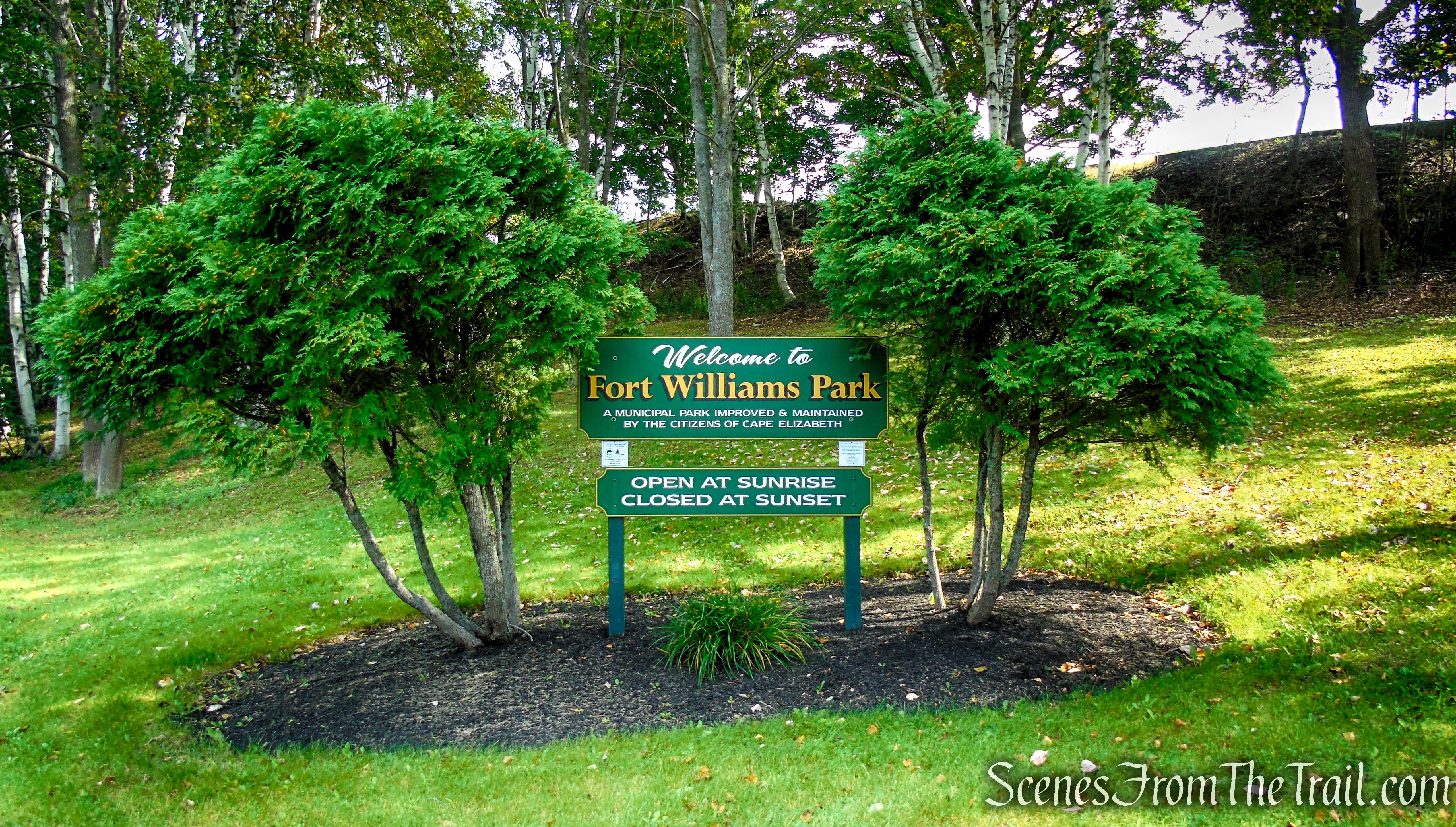
Fort Williams Park
Famous for having Portland Head Light on its grounds, the park also encompasses the decommissioned and largely demolished United States Army post Fort Williams, which was operational during World War I and World War II.
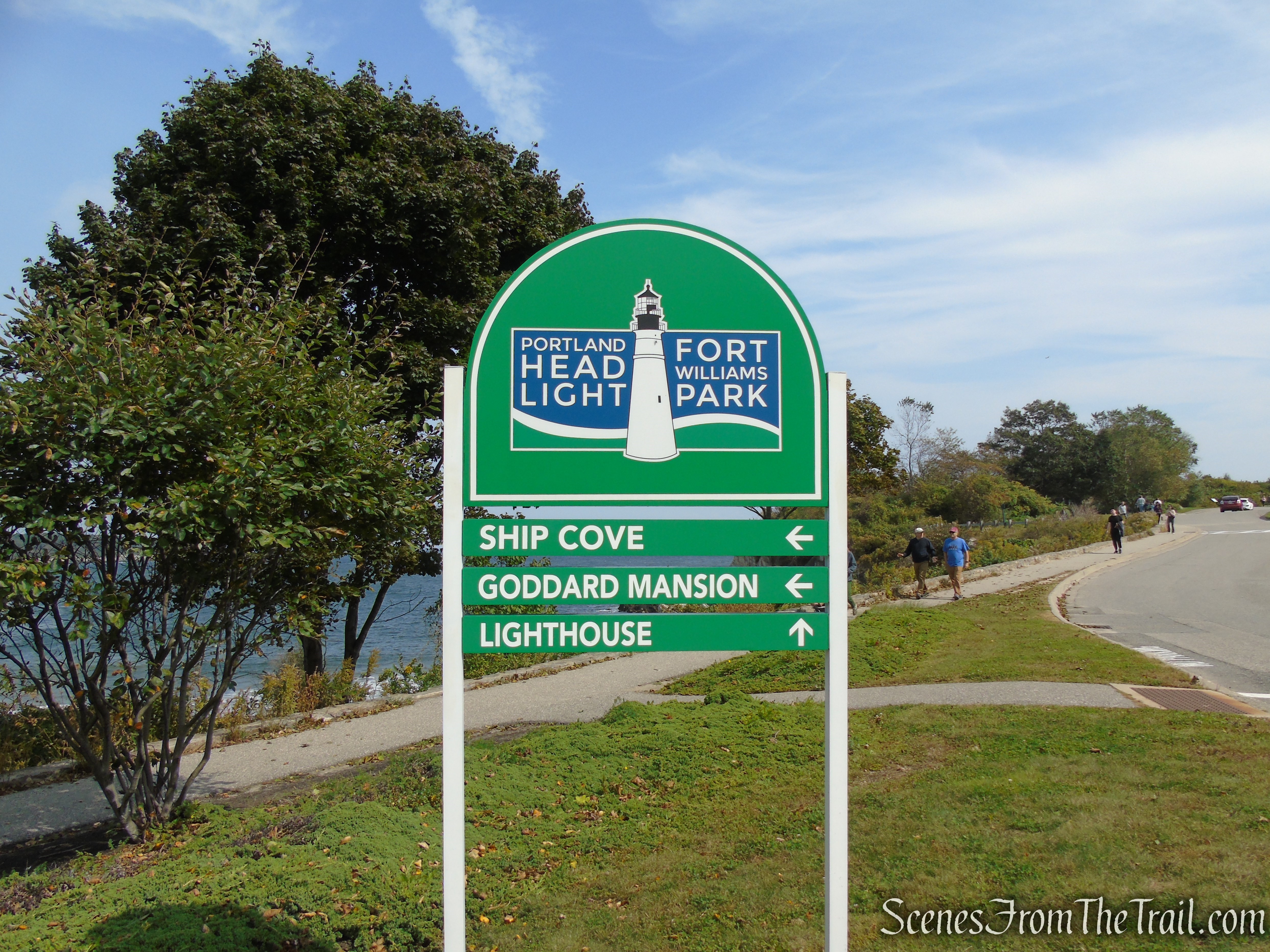
Portland Head Light at Fort Williams Park
The park offers many great views of the Portland Head Light. Visitors can easily take photographs of the lighthouse from many areas within the park. However, please note that the lighthouse tower is only open to the public one day per year on Maine Open Lighthouse Day.
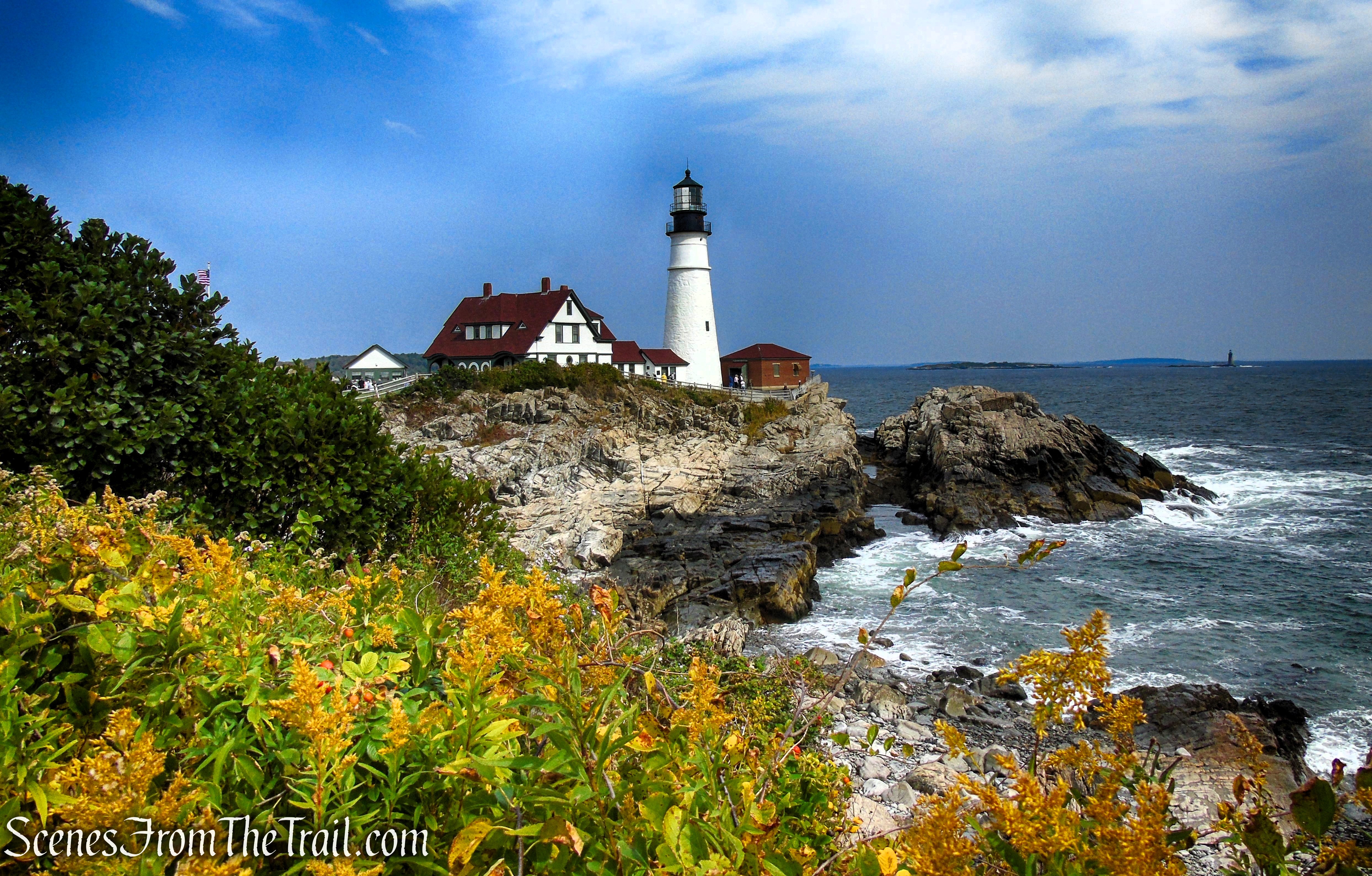
Portland Head Light
History:
- Portland Head Light:
In 1787, the General Court of Massachusetts (the Massachusetts legislature) provided $750 to begin construction of a lighthouse. In 1790, when the United States Government took over the responsibility of all lighthouses, Congress appropriated $1,500 for its completion. The original tower measured 72′ from base to lantern deck and was lit with 16 whale oil lamps. It was first lit on January 10, 1791. By 1865, the tower was raised 20′ and a 2nd order Fresnel lens was installed. This lens was in the lighthouse until 1958. The current Keepers’ Quarters building was constructed in 1891 as a two-story duplex. Until 1989, it was home to the head and assistant lighthouse keepers and their families.
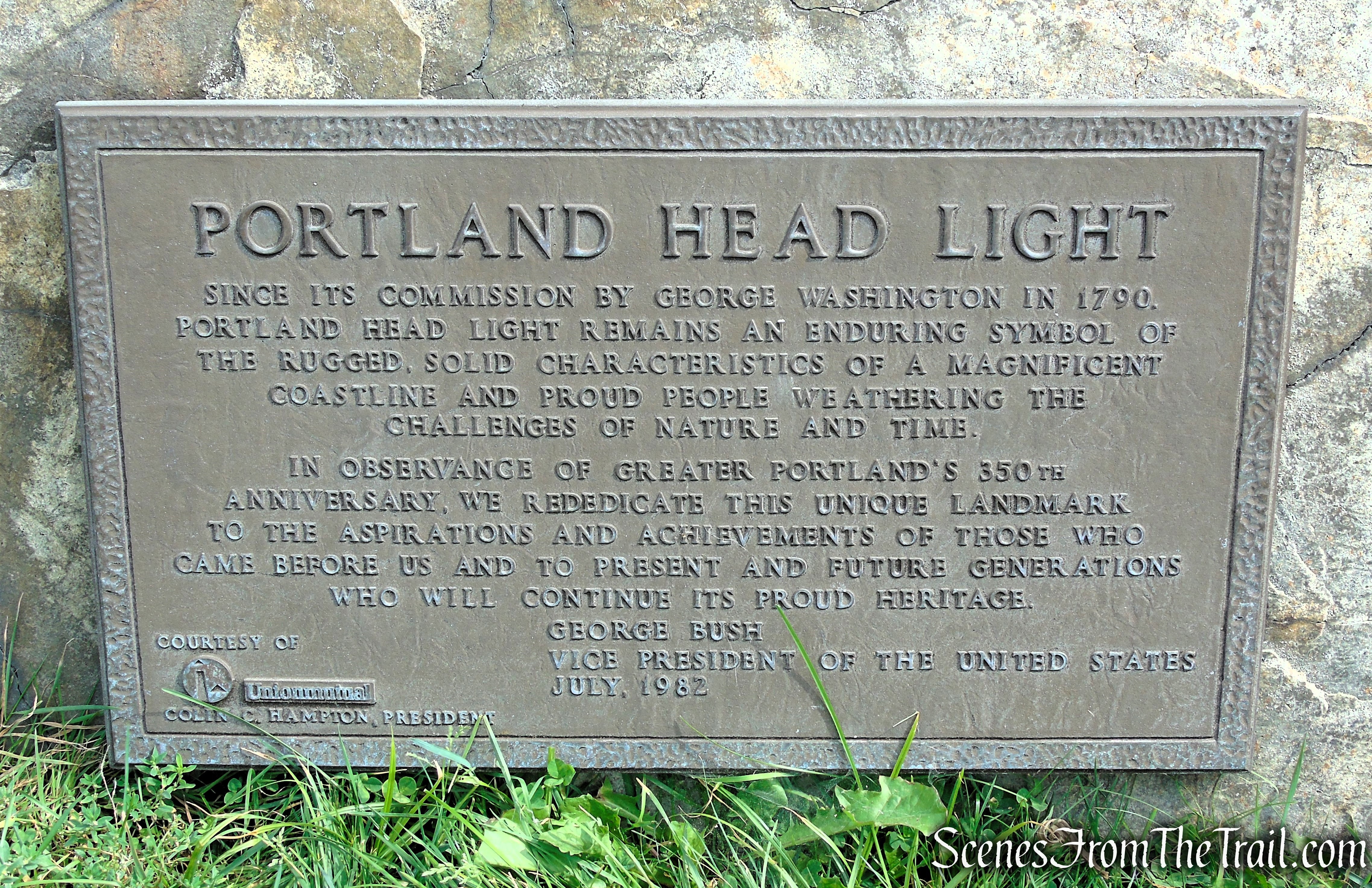
Portland Head Light
The United States Coast Guard maintains the actual light and the fog signal, but the remainder of the property is managed by the Town of Cape Elizabeth.
- Fort Williams Park:
The original 14-acre purchase in 1872 served to establish a sub-post to Fort Preble located at Spring Point. Over about 25 years, a total of 90 acres were purchased to develop a fortification at Portland Head. These formative years saw the first three batteries — Sullivan, DeHart, and Hobart — completed on April 16, 1898.
This fortification became known as Fort Williams on April 13, 1899, by order of Army Headquarters. The fort was named in honor of the late Brevet Major-General Seth Williams, Assistant Adjutant-General, United States Army.
During World War I, the fort was fully manned by artillery companies and National Guard troops. Anti-aircraft guns were added to the defenses during this time.
During World War II, Fort Williams served as the headquarters of the Harbor Defenses of Portland. In January, 1950, Fort Williams’ mission was officially changed from a harbor defense post to a logistical and administrative support installation for all military units and personnel in the State of Maine.
On Saturday, June 30, 1962, Fort Williams officially closed and was turned over to the General Services Administration to be sold. At a special town meeting on June 29, 1964, the residents of Cape Elizabeth voted to buy Fort Williams. Their offer of $200,000 was accepted and on December 1, 1964, the Town of Cape Elizabeth acquired Fort Williams.
After many proposals ranging from a Coastal Science Park to low-income housing, the Town Council designated Fort Williams on July 23, 1979, as “Fort Williams Park.” Since that time, Fort Williams Park has been host to many picnics, concerts and other events and has been enjoyed by countless thousands of visitors and Cape Elizabeth residents alike.
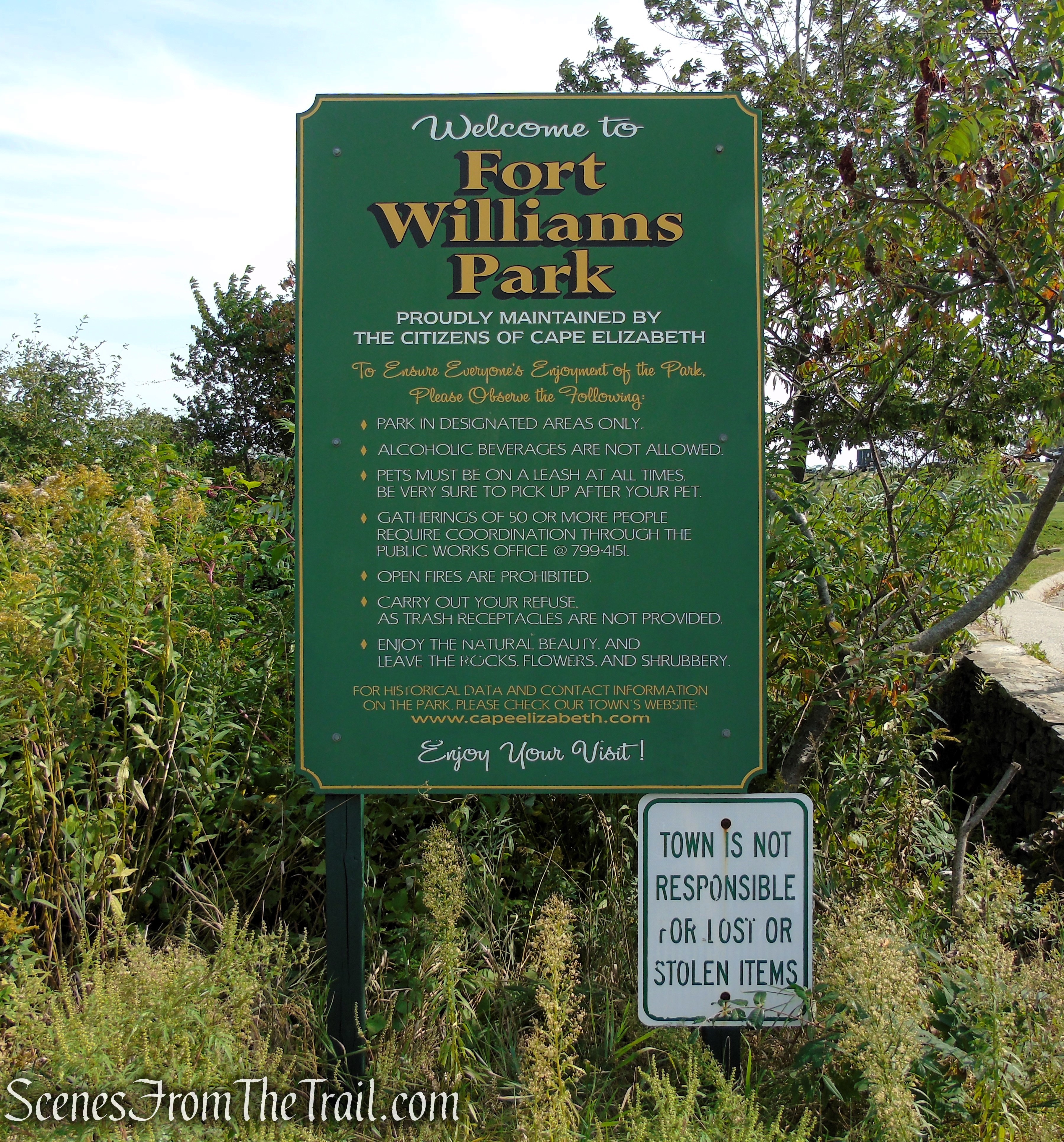
Fort Williams Park
Visit Overview:
This lighthouse was on my list of places to visit during my Maine road trip. Having visited the Nubble Light earlier in the morning, we made our way to the Portland Head Light, which is about an hour north. This was a great place to stop and stretch the legs. Aside from the lighthouse, Fort Williams Park has a lot to see and explore. I wandered around the park for a couple of hours and saw most if not all there is to see. It was a beautiful day in September and there were a lot of people visiting, but if one wants, there are some spots where you can find a little seclusion.
Portland Head Light:
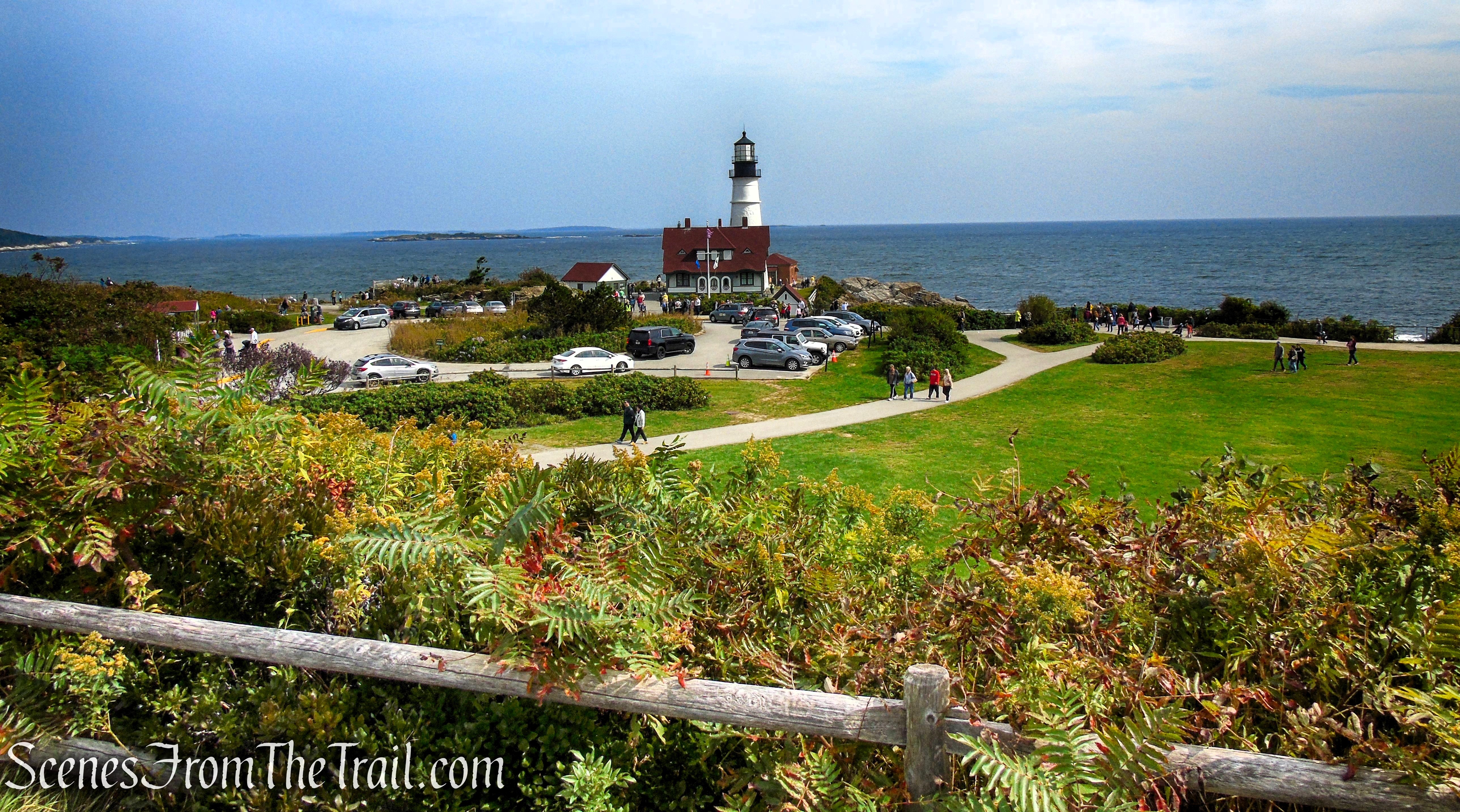
Portland Head Light

Portland Head Light
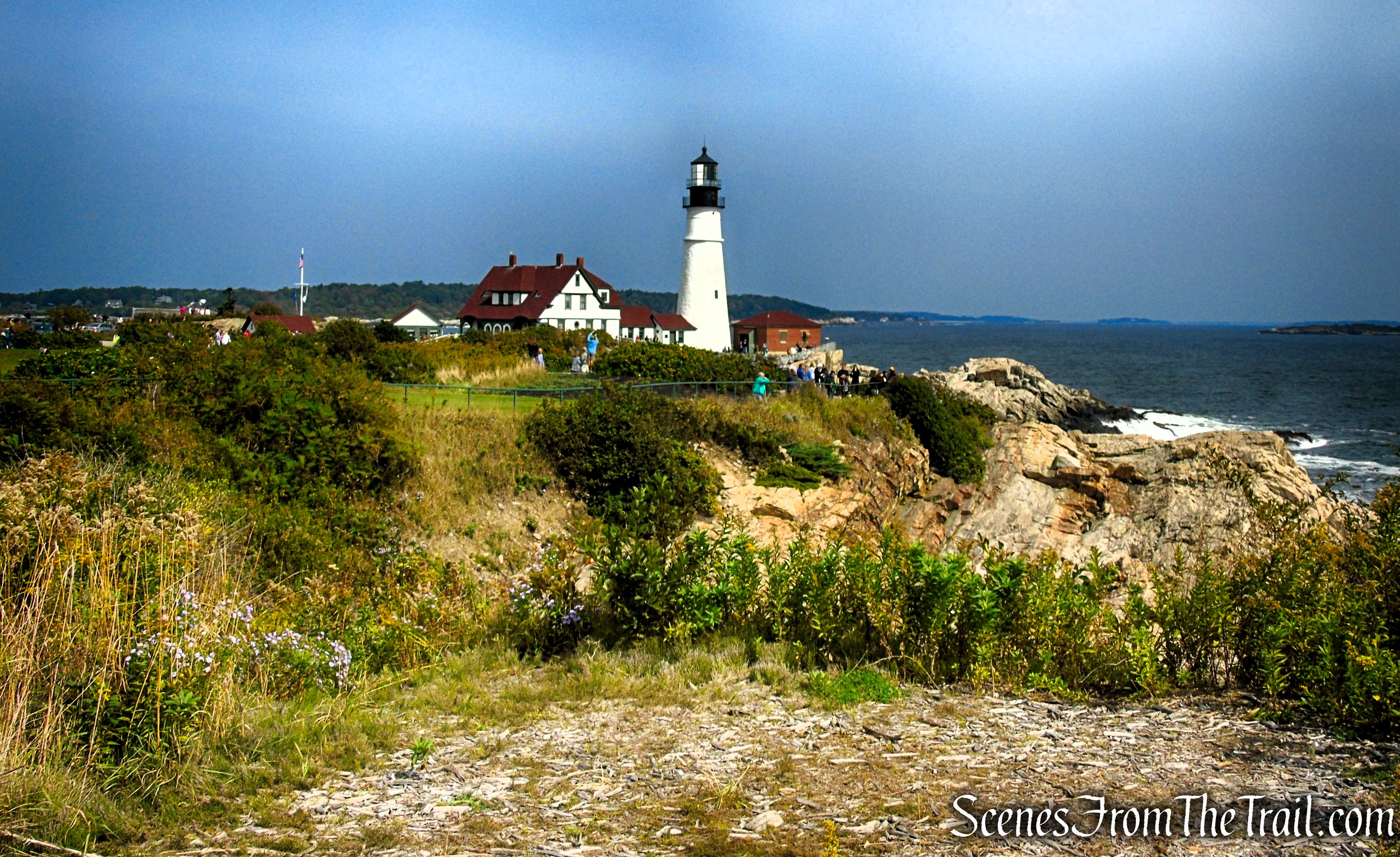
Portland Head Light
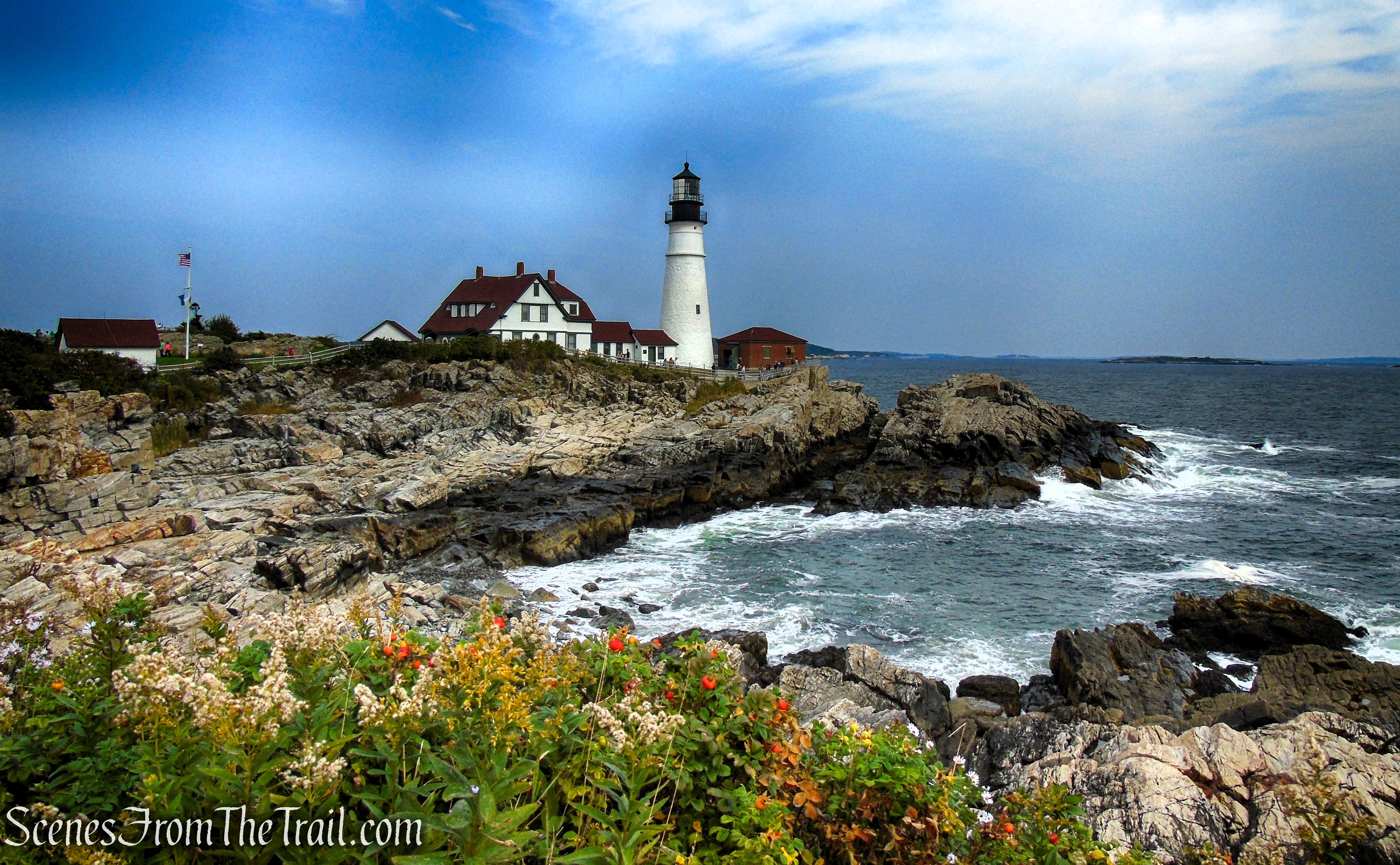
Portland Head Light

Portland Head Light
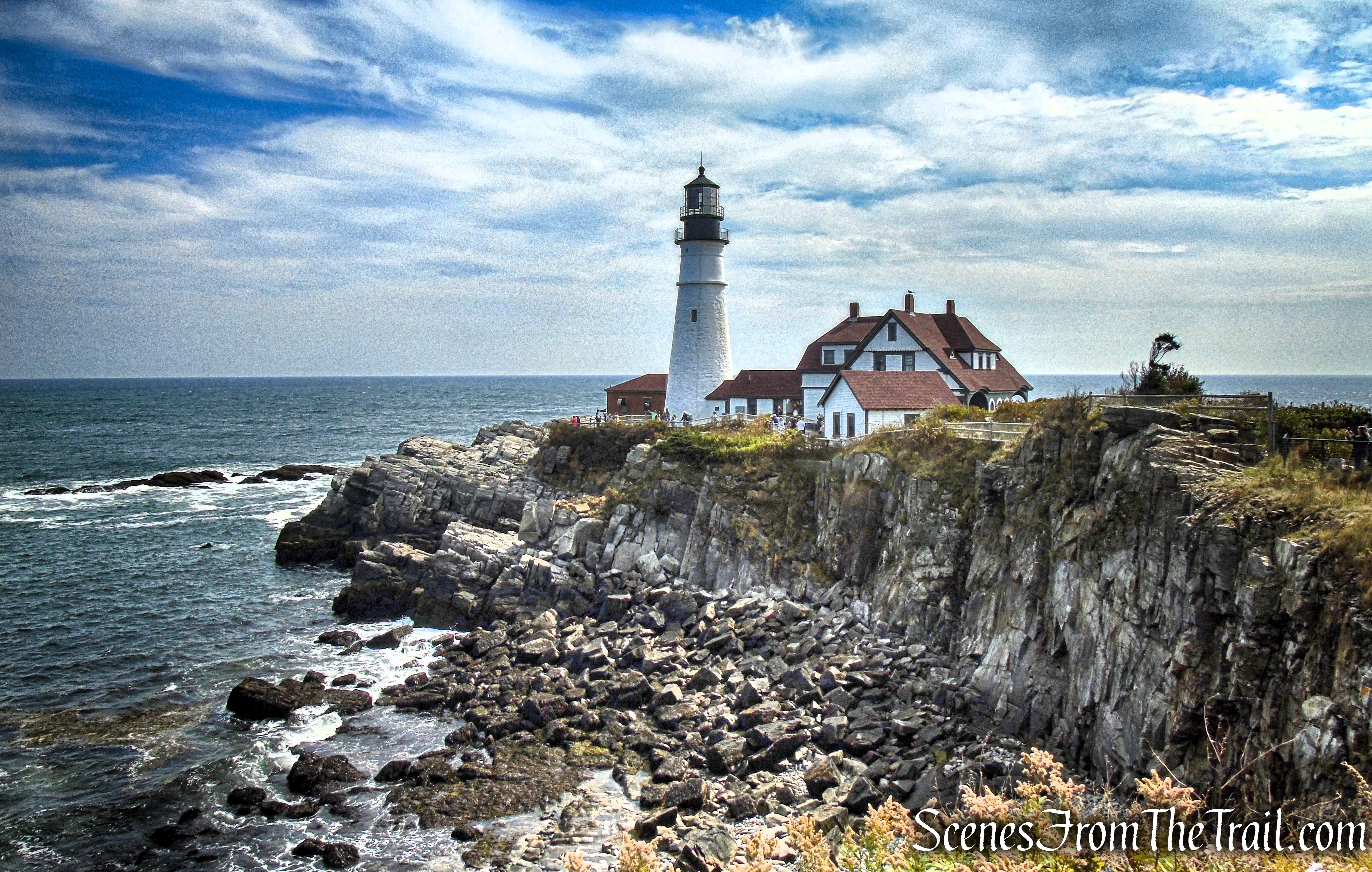
Portland Head Light
Annie C. McGuire Shipwreck Memorial: A large rock near the lighthouse commemorates the wreck of the Annie C. Maguire. Late on Christmas Eve in 1886, the three masted bark struck the ledge at Portland Head.

Annie C. McGuire Shipwreck Memorial
Fort Williams Park:
When you are done checking out the lighthouse, you may want to explore other areas of the park. Make sure that you either print or download a copy of the map, which will help you find the historical points of interest. It would be a shame if you visited from far away and missed some of them. The park is a wonderful place to wander around and enjoy the gorgeous landscape while getting a history lesson about our great nation.
- Battery Blair: As you leave the main parking lot and head towards the lighthouse, you are first greeted by the Battery Blair Memorial. The battery, named for Civil War General Francis P. Blair (1821-1875), is the site of the largest of six gun batteries built at Fort Williams. Battery Blair was manned during World War I and the early years of World War II. It was hidden from view at sea behind a concrete and earth berm, it contained two twelve-inch guns mounted on disappearing carriages. It was designed to protect Portland Harbor from enemy attacks by battleships and cruisers, the twelve-inch guns mounted at Battery Blair were the largest in use at the time. These guns firing a 12-inch diameter, 1,000 pound shell, had a range of 8 miles. The guns fired armor-piercing shells on a flat trajectory to breach the heavily protected hulls of battleships.
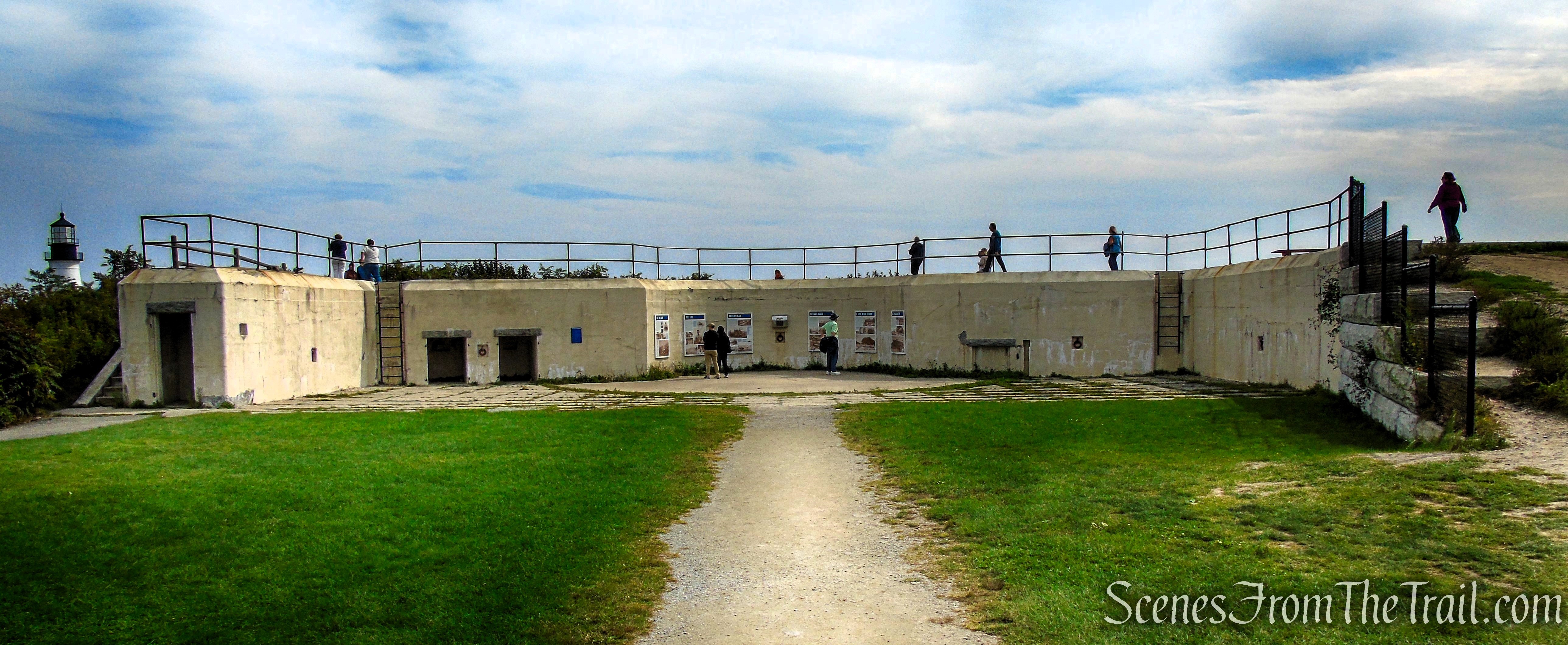
Battery Blair Memorial
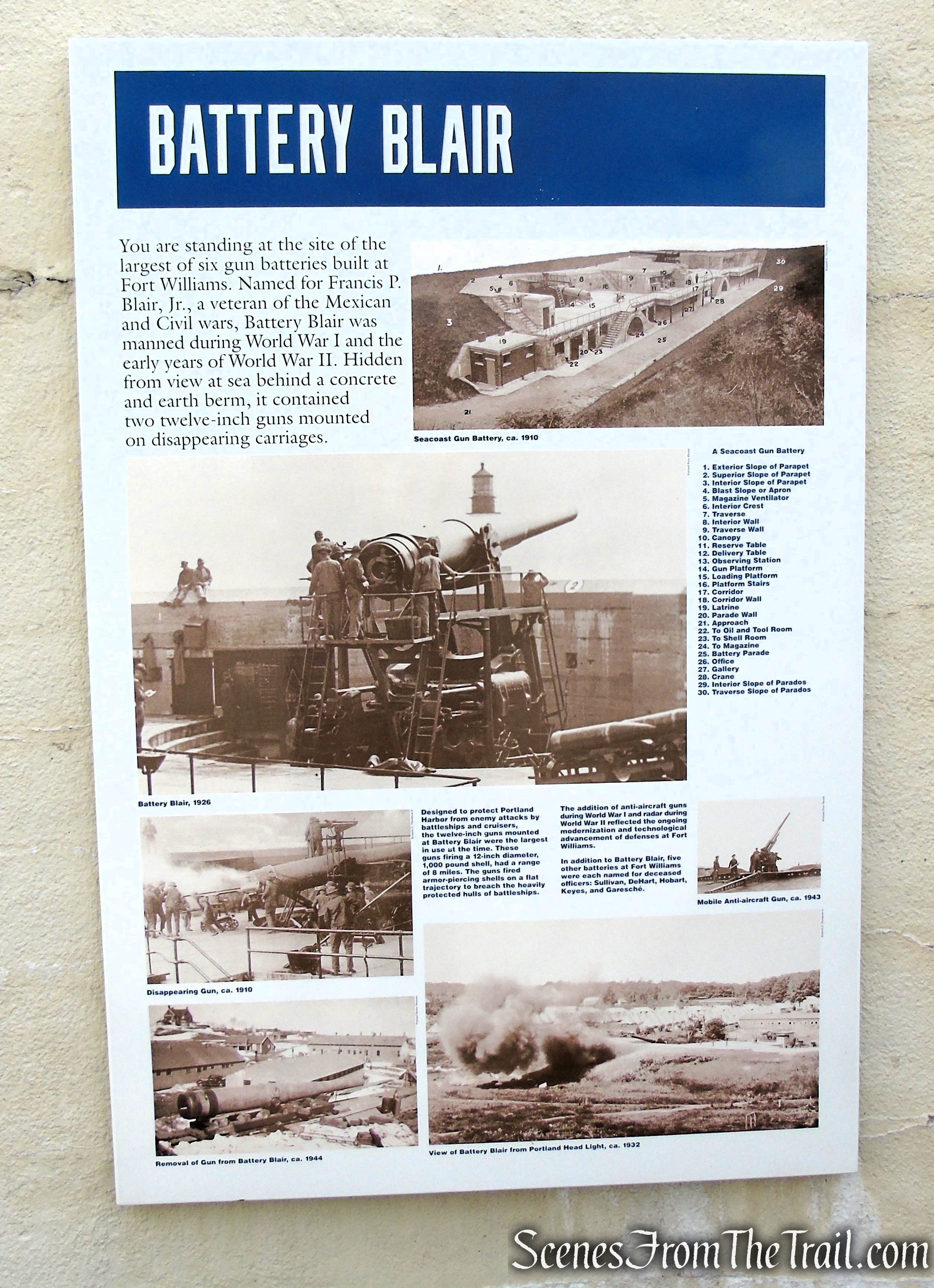
Battery Blair Memorial
- Cliff Walk at Fort Williams Park: This crushed stone path winds along the scenic cliffs and historic remains of Fort Williams. Views of Ram Island Ledge Light and Casco Bay Islands can be seen on a clear day. Portland Head Light located right along the path.
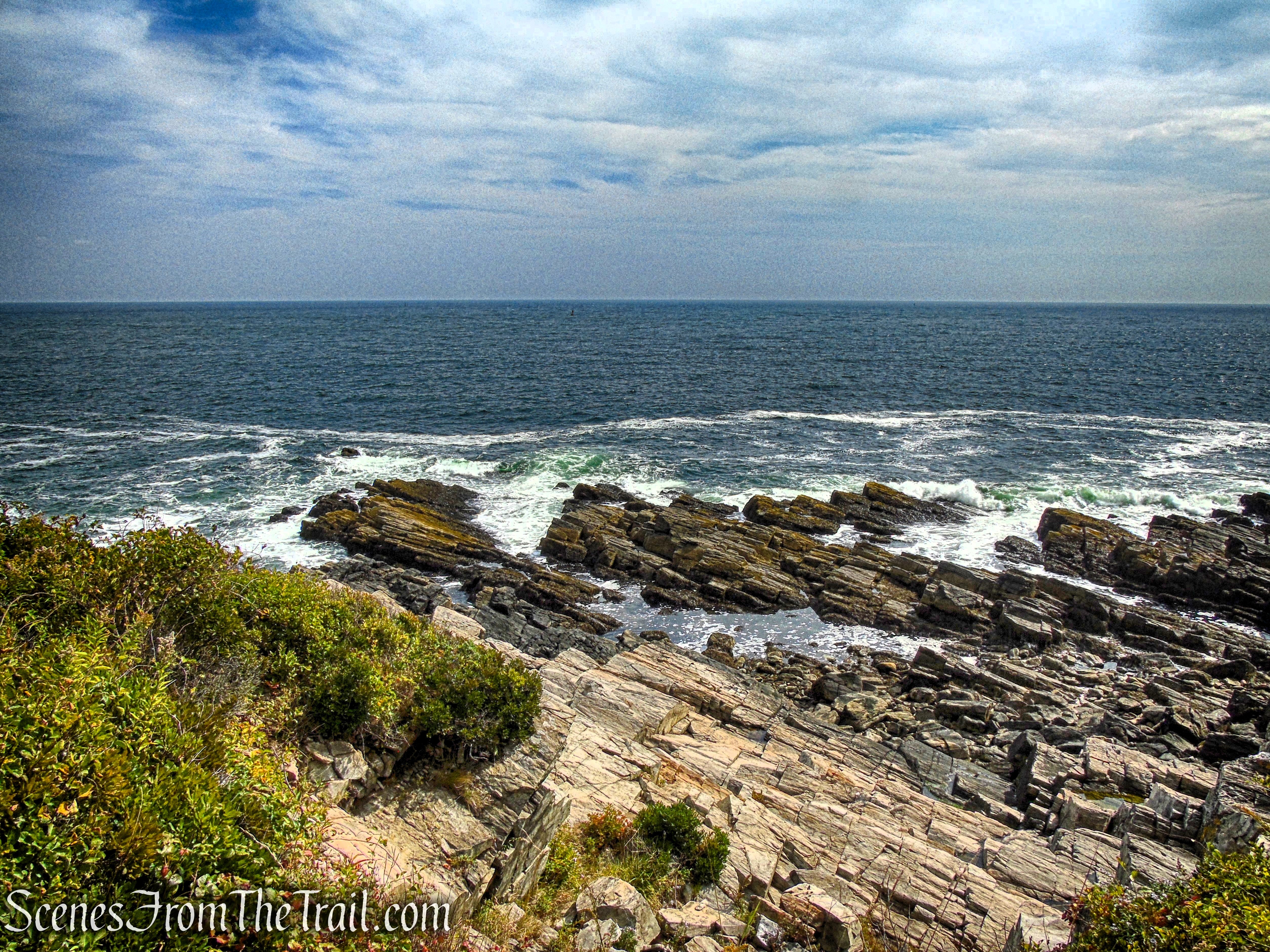
Rocky coastline – Fort Williams Park
Ram Island Ledge Light Station is about a mile offshore from Portland Head Light, near the entrance to Portland Harbor, and is surrounded by dangerous ledges. The first stones were laid on Ram Island Ledge in July 1903. By the end of September, the tower reached a height of 32 feet. A crew of 25 men worked from April to July 1904 to complete the tower. A 26,000-pound lantern was placed on the tower and fitted with a third-order Fresnel lens. With the lantern, the lighthouse reached a height of 90 feet, with the light 77 feet above mean high water.
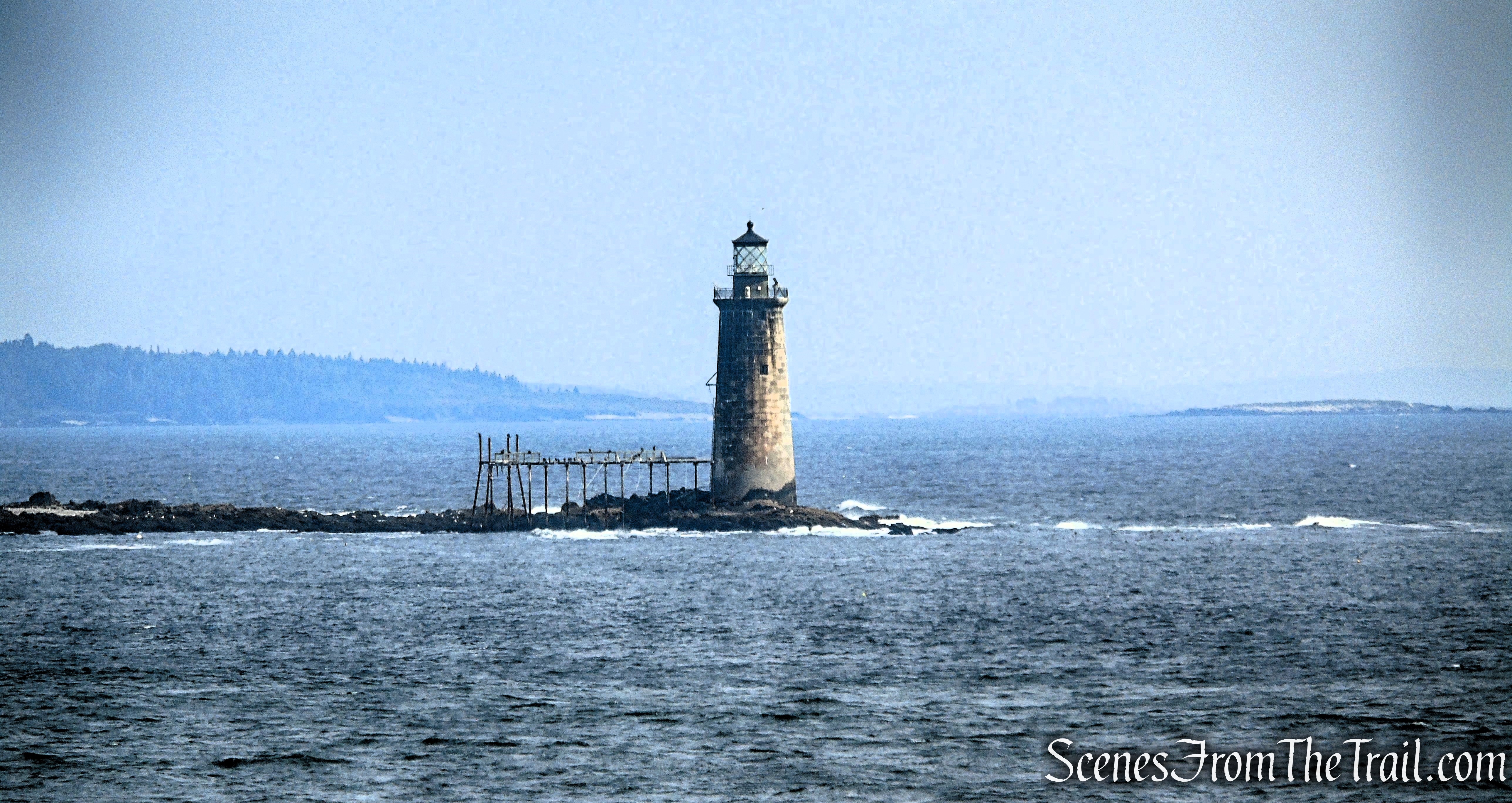
Ram Island Ledge Light Station
An iron pier was added to the ledge, and the kerosene lamp was first lighted on January 23, 1905.
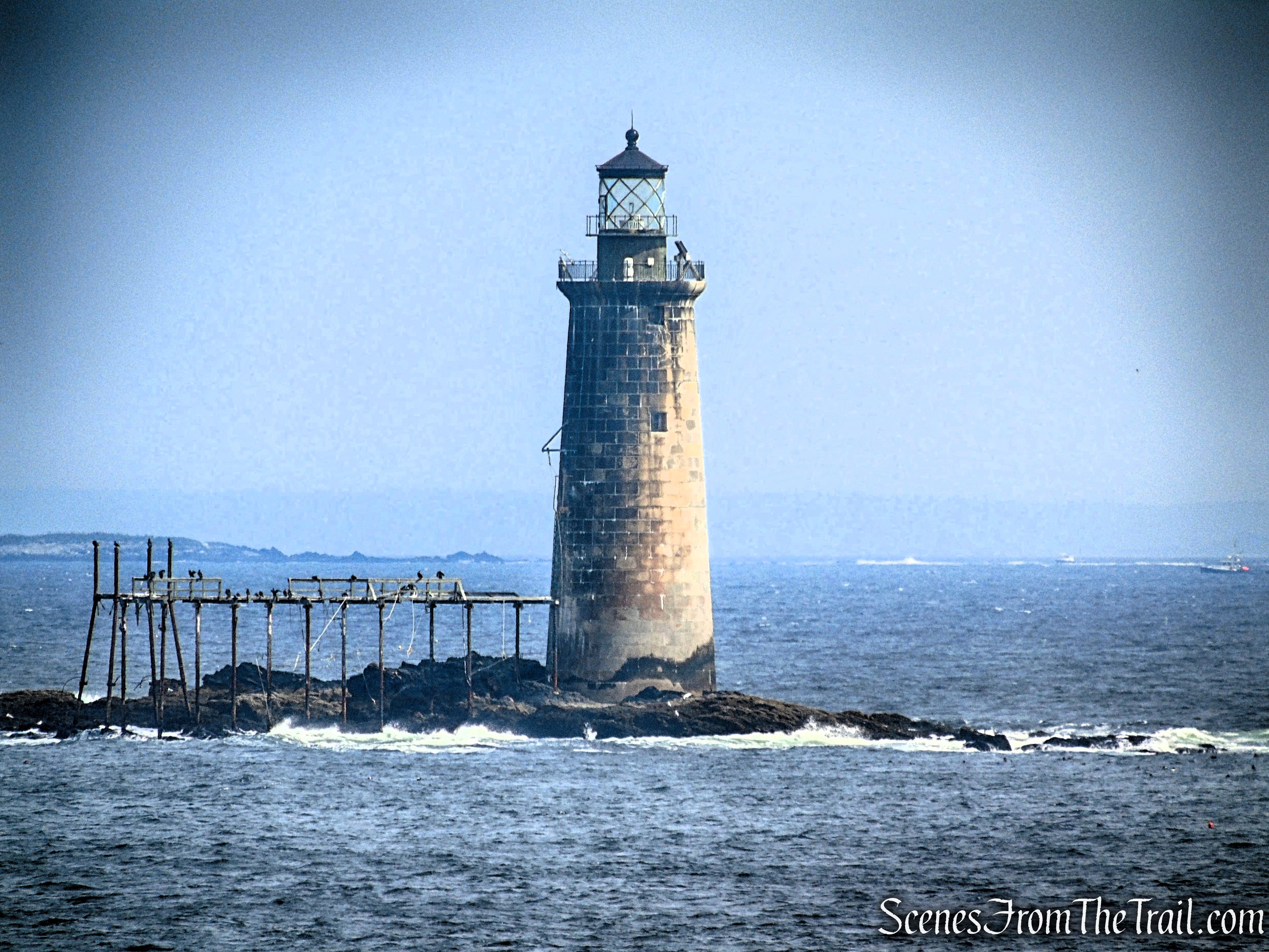
Ram Island Ledge Light Station
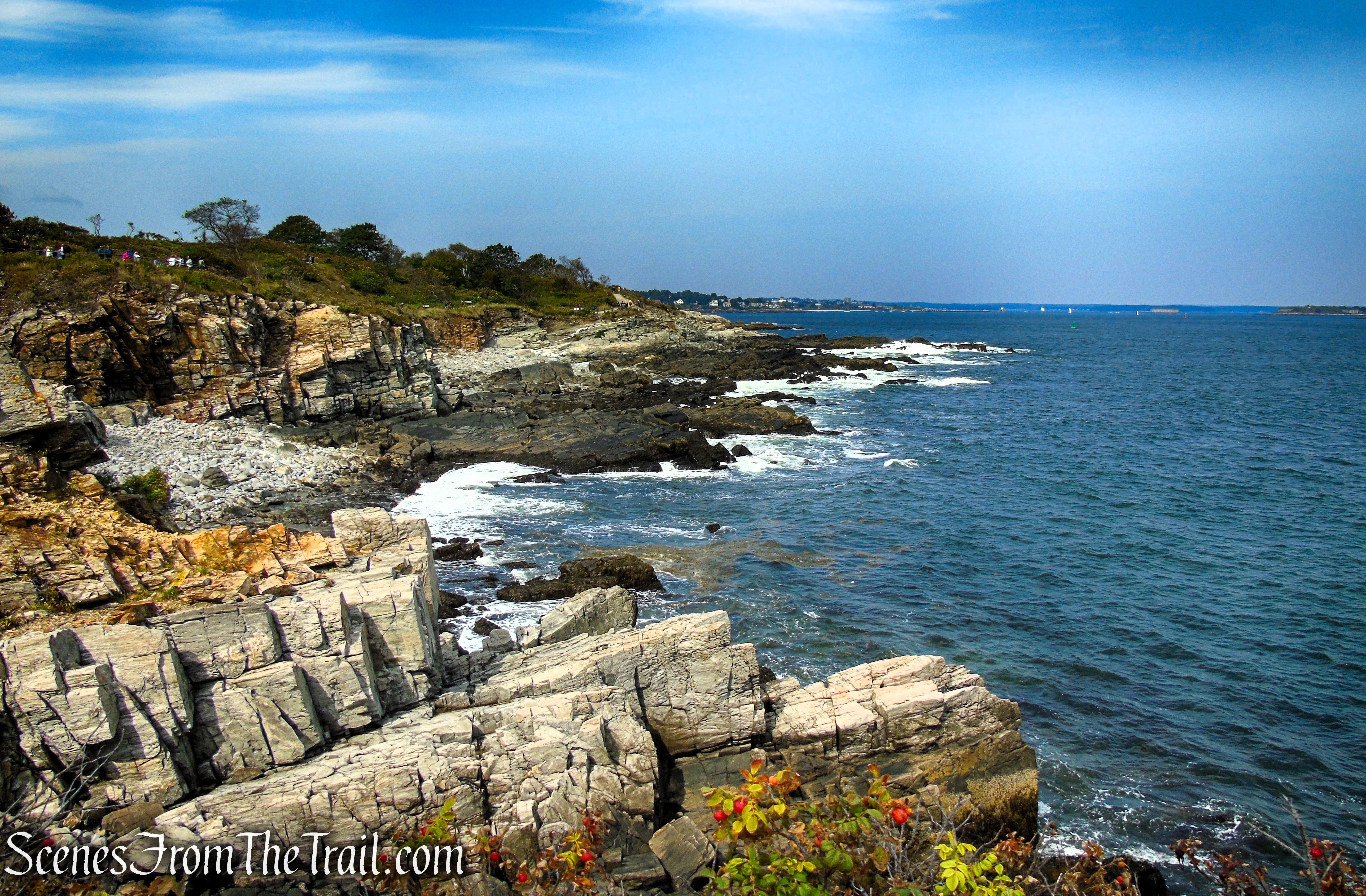
Rocky coastline – Fort Williams Park
Looking out at Ship Cove with Battery Keyes visible (center) on the far side of the cove.

Ship Cove – Fort Williams Park
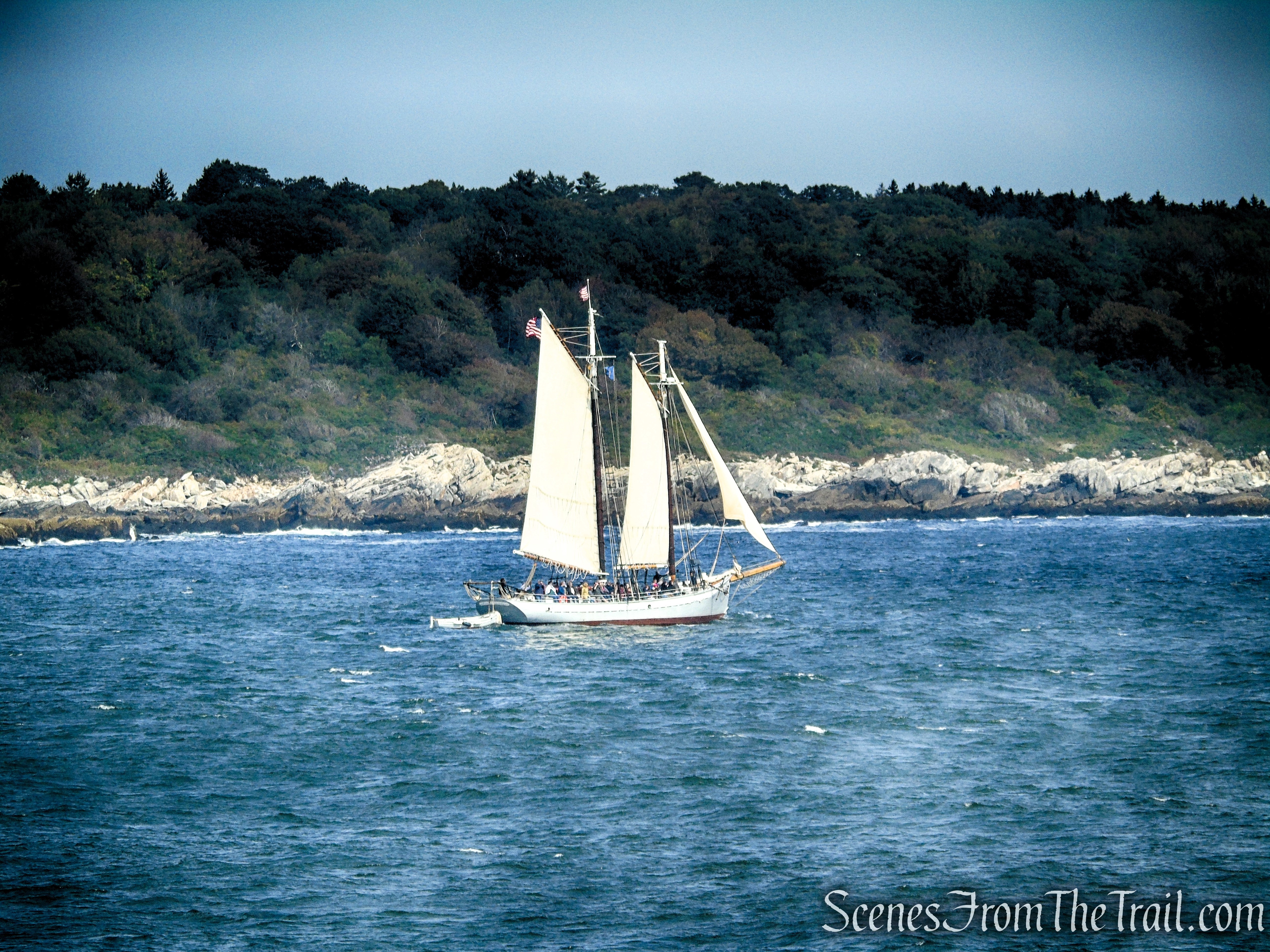
Rocky coastline – Fort Williams Park
Located on the north side of the entrance road is a small rocky beach, Ship Cove, with a great view of Ram Island Ledge Light located in Casco Bay. At low tide, a small sandy beach appears.
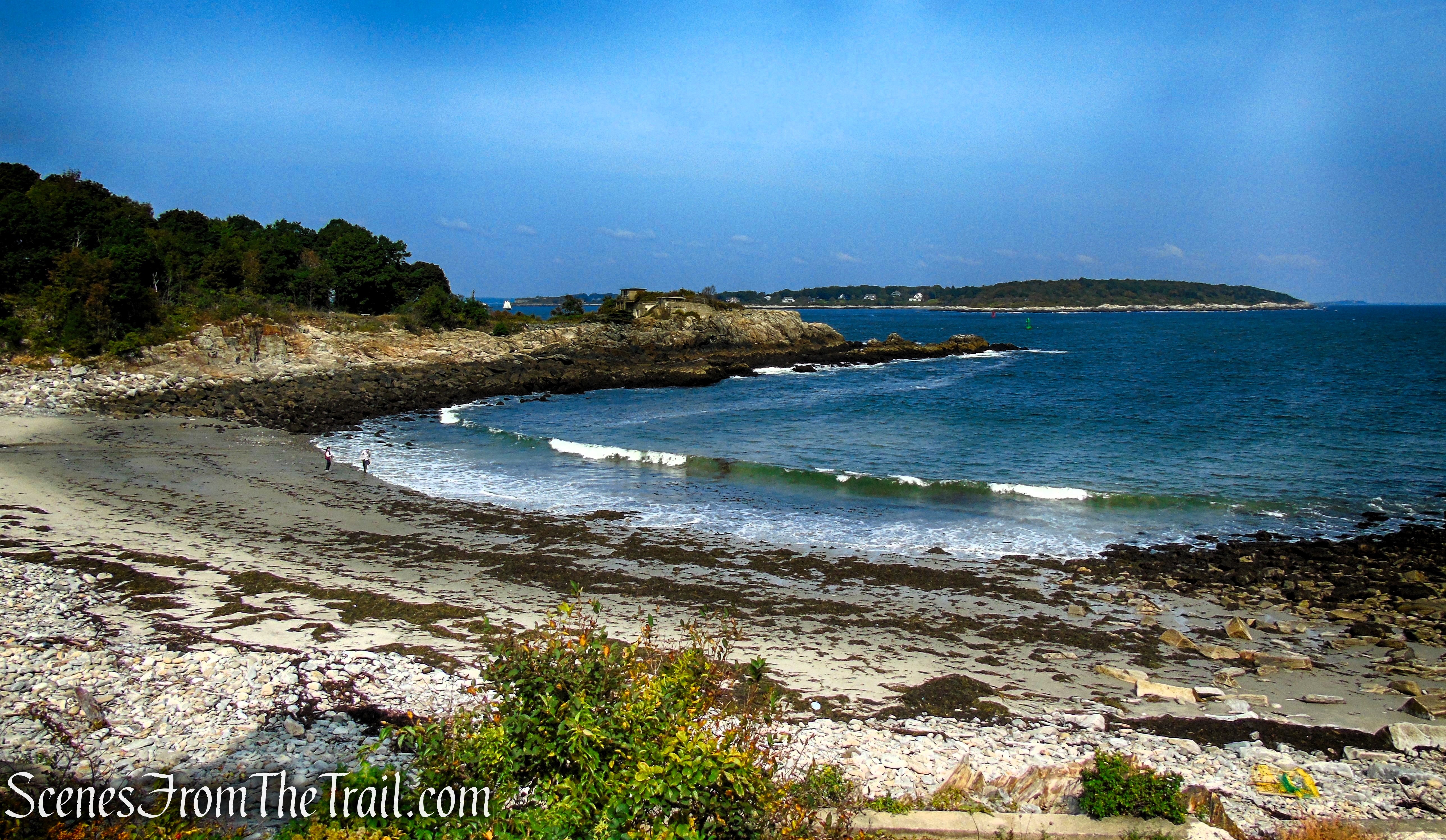
Ship Cove – Fort Williams Park
- Goddard Mansion: Predating the fort, the mansion was designed and built (1858) for local businessman John Goddard, briefly a volunteer army colonel at the start of the Civil War in 1861. Acquired by the army in 1900, the mansion was used as NCO Quarters (non-commissioned officers/sergeants) and later included an NCO Club. Seriously deteriorated by the time of the town’s acquisition in 1962, the interior debris was burned in a controlled fire in the 1980s, and the walls were fenced off in 2009.
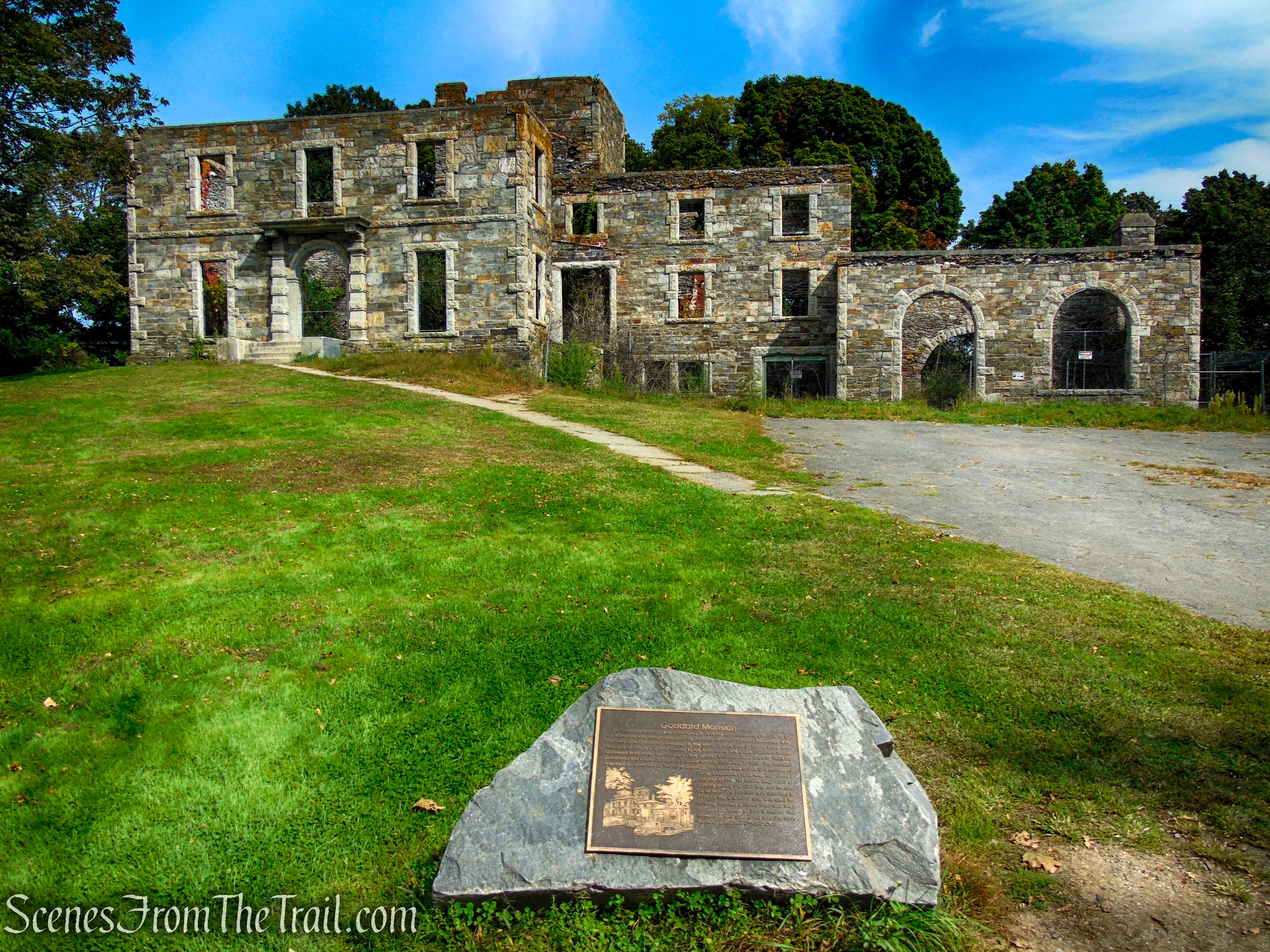
Goddard Mansion – Fort Williams Park
- Battery Keyes (1906): Named after Major General Erasmus D. Keyes (1810–1895), who served with distinction during the U.S. Civil War, the battery was built above the northern point of Ship Cove behind Goddard Mansion.
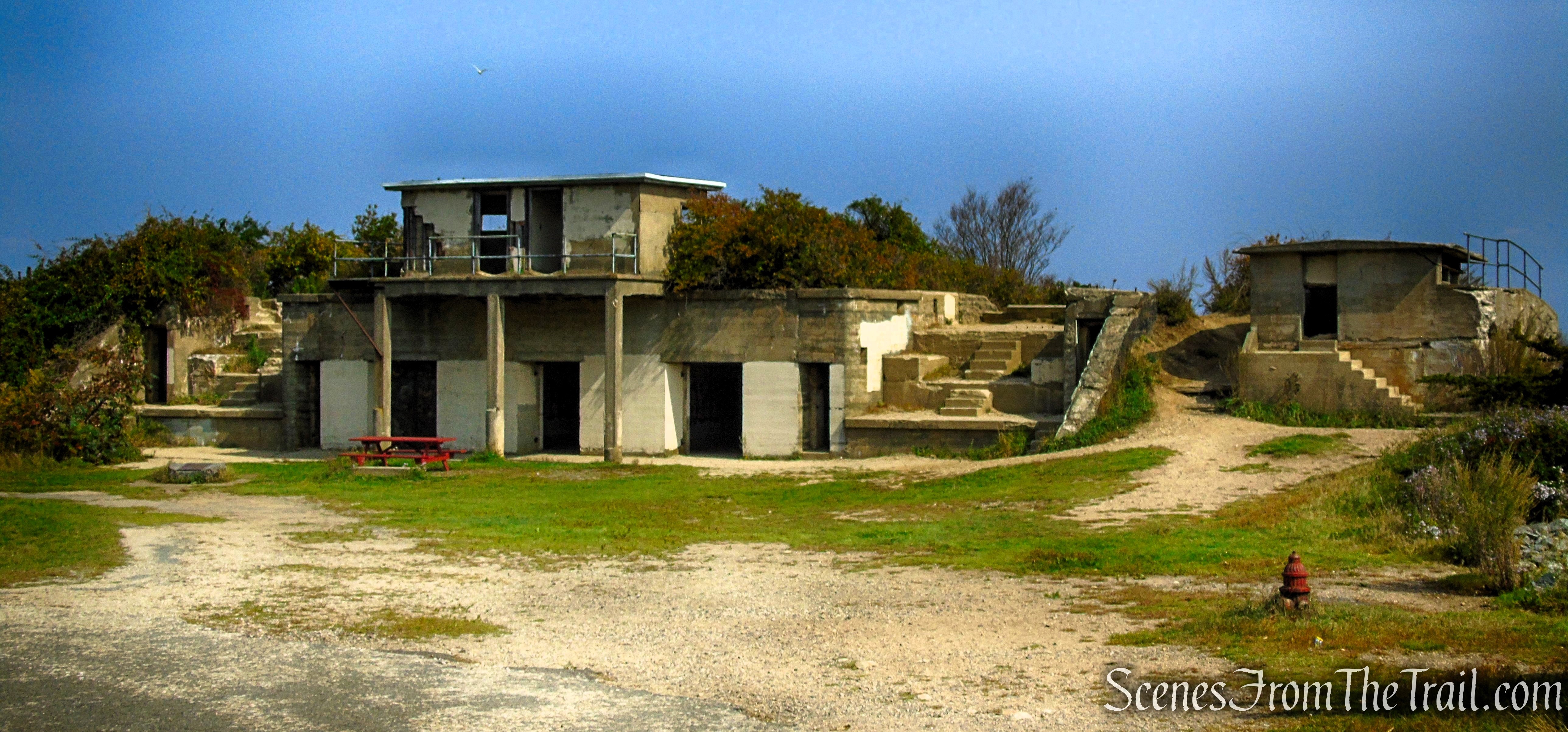
Battery Keyes – Fort Williams Park
Battery Keyes was one of the last two batteries built at the fort in 1906. This concrete battery mounted two 3-inch Rapid Fire Guns on pedestal mounts with a protective shield, meaning they fired 3-inch diameter shells weighing fifteen pounds with a range of four and a half miles. The small battery was designed to defend against small, fast attack boats in a point-and-shoot manner. Still intact are gun emplacement number two, the magazines, and the range finder station.
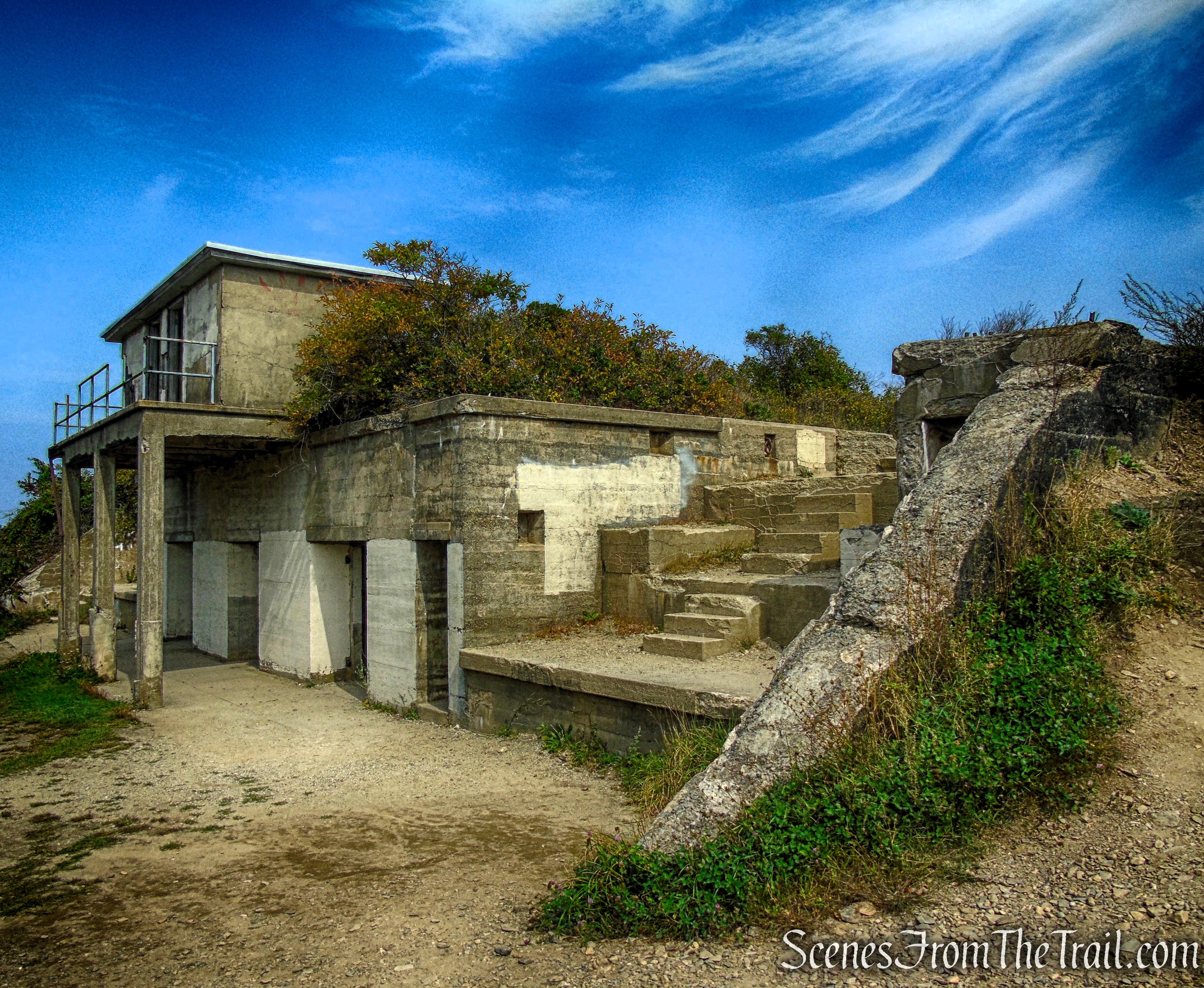
Battery Keyes – Fort Williams Park
The battery also included a mine observation station built on the top to relay information on ship locations to the mine officers in the Mining Casemate on the other side of Ship Cove for firing the electrically controlled mines. Many of the doors leading to the first-level rooms are open for exploration, offering a glimpse into this historic structure.
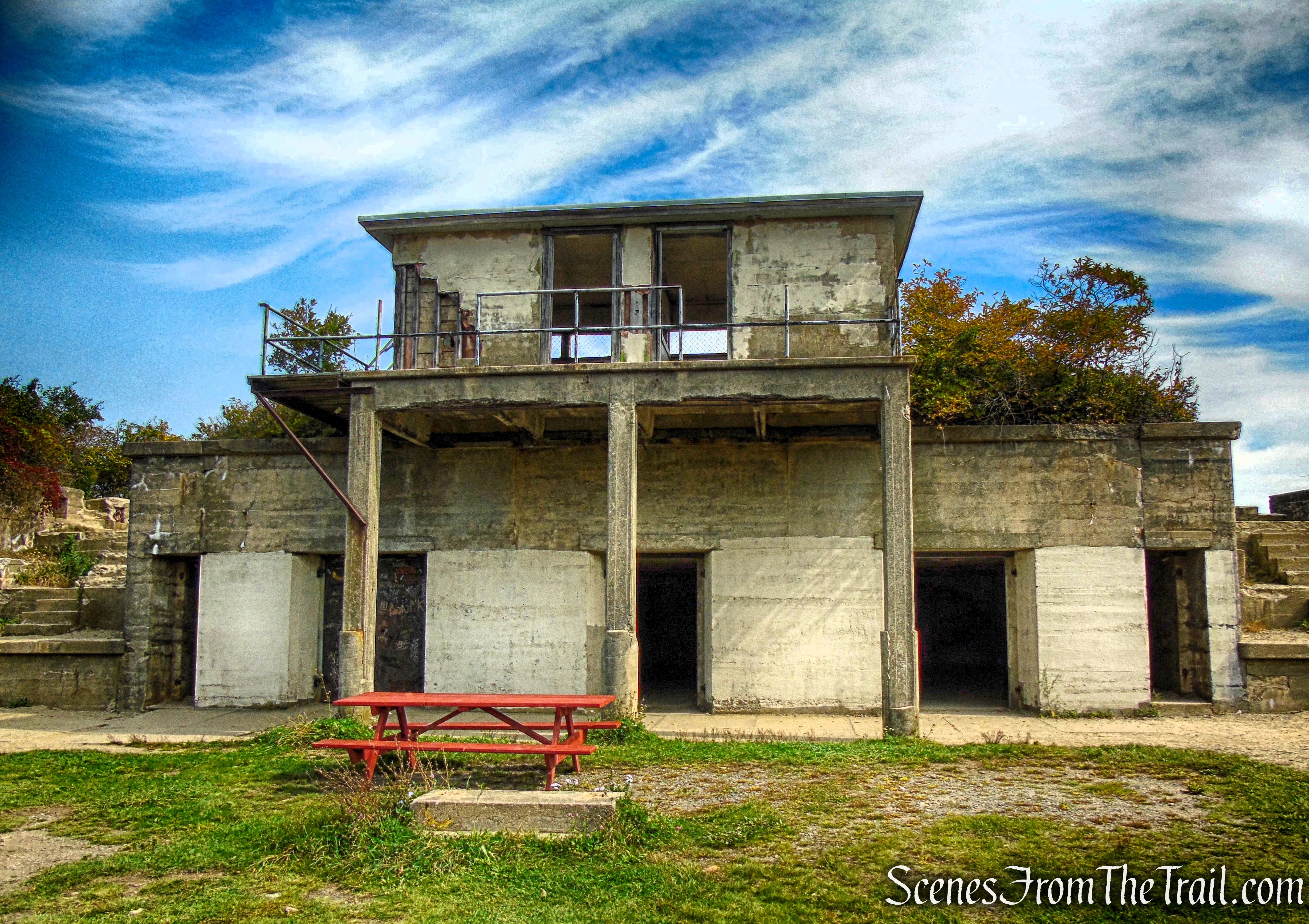
Battery Keyes – Fort Williams Park
This Mining Casemate was originally constructed in 1891. The function of the casemate was to control the minefield in the main channel, which was laid during the Spanish-American War and World Wars I and II to prevent the entry of hostile vessels.
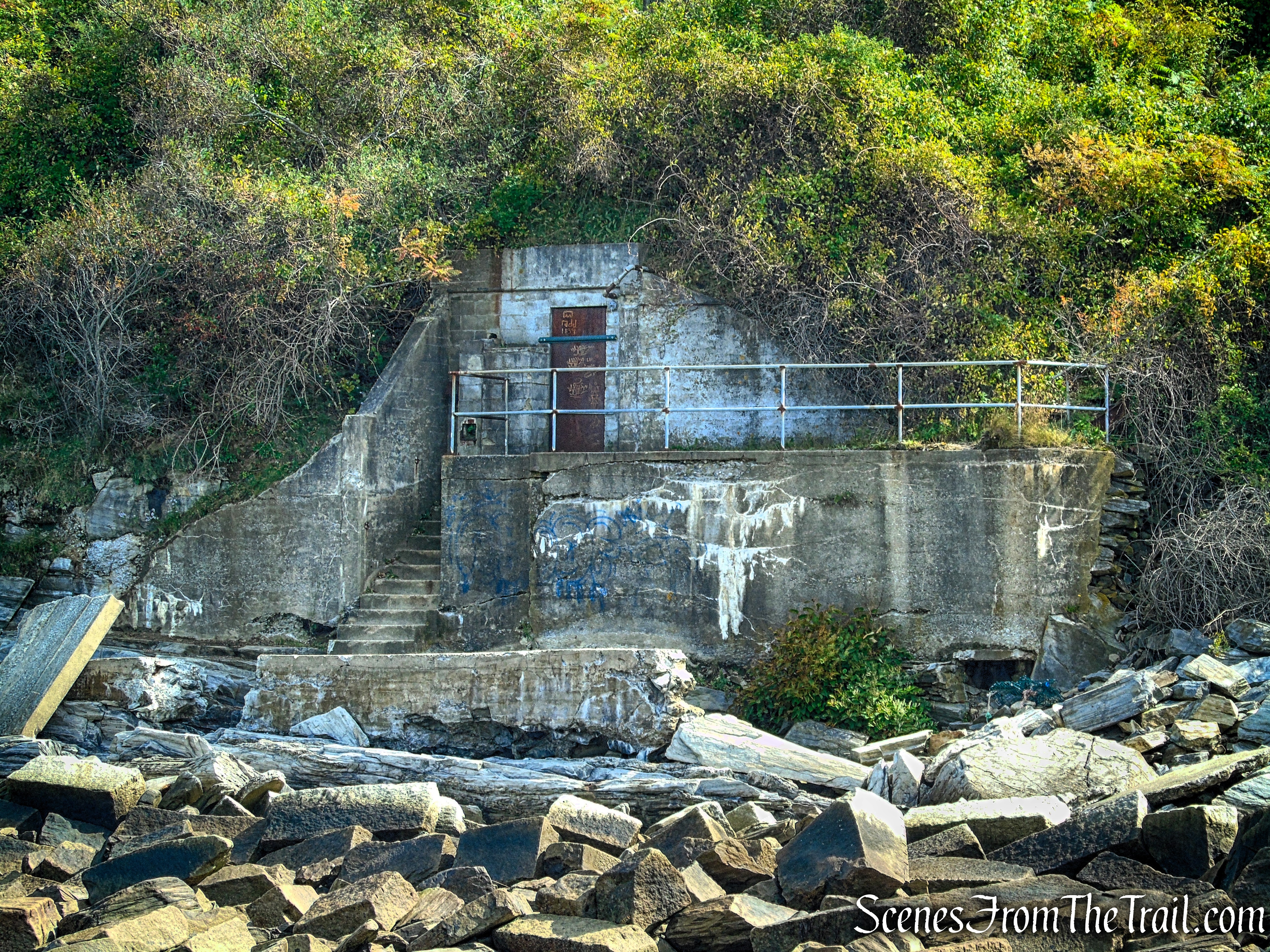
Mining Casemate – Fort Williams Park
During World War II Battery Keyes was the “alert” battery, which was manned and prepared to fire on any vessel which failed to identify itself properly.
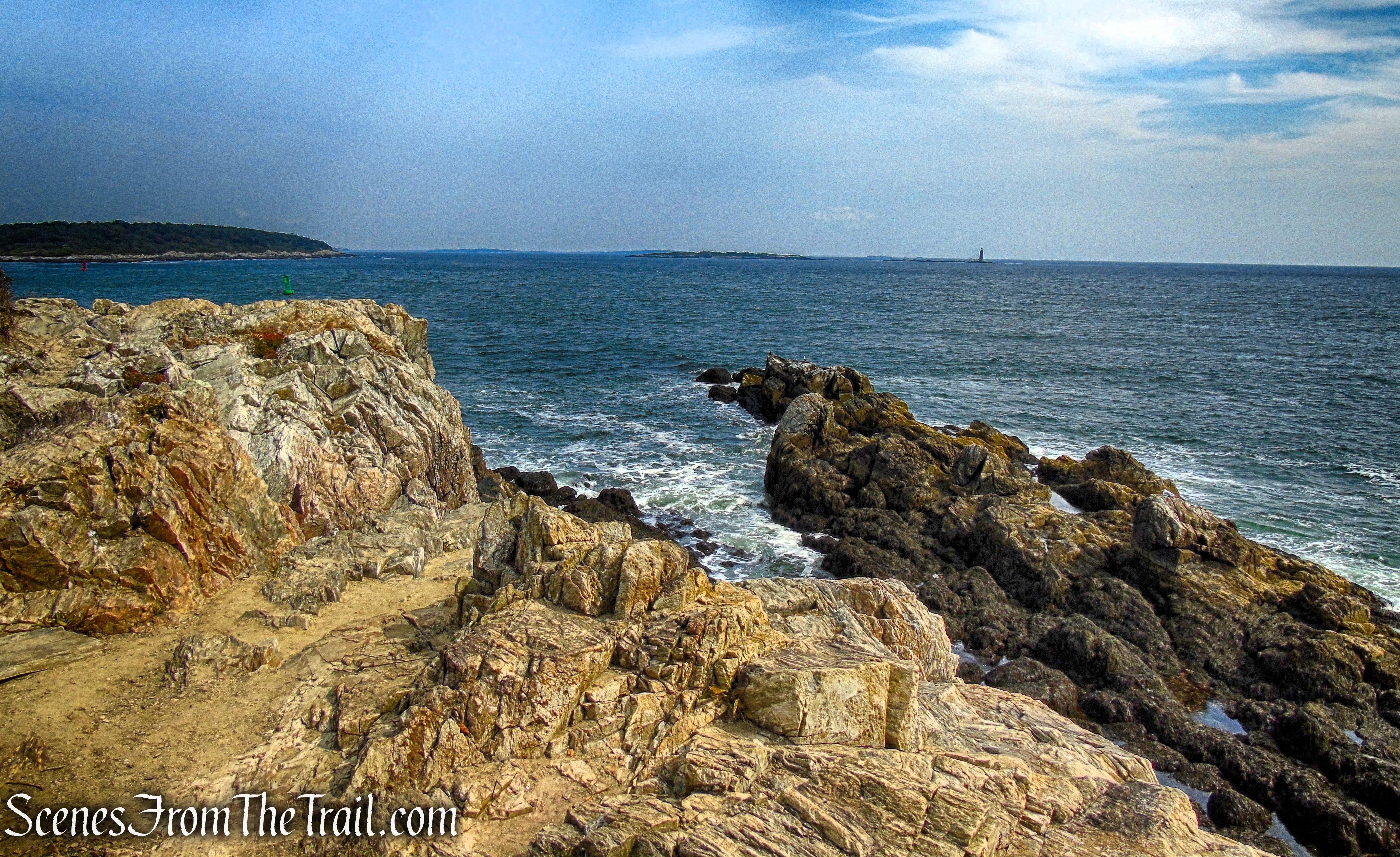
Battery Keyes – Fort Williams Park
While the original weapons and mounts are no longer present, the concrete core of the battery remains in relatively good condition.
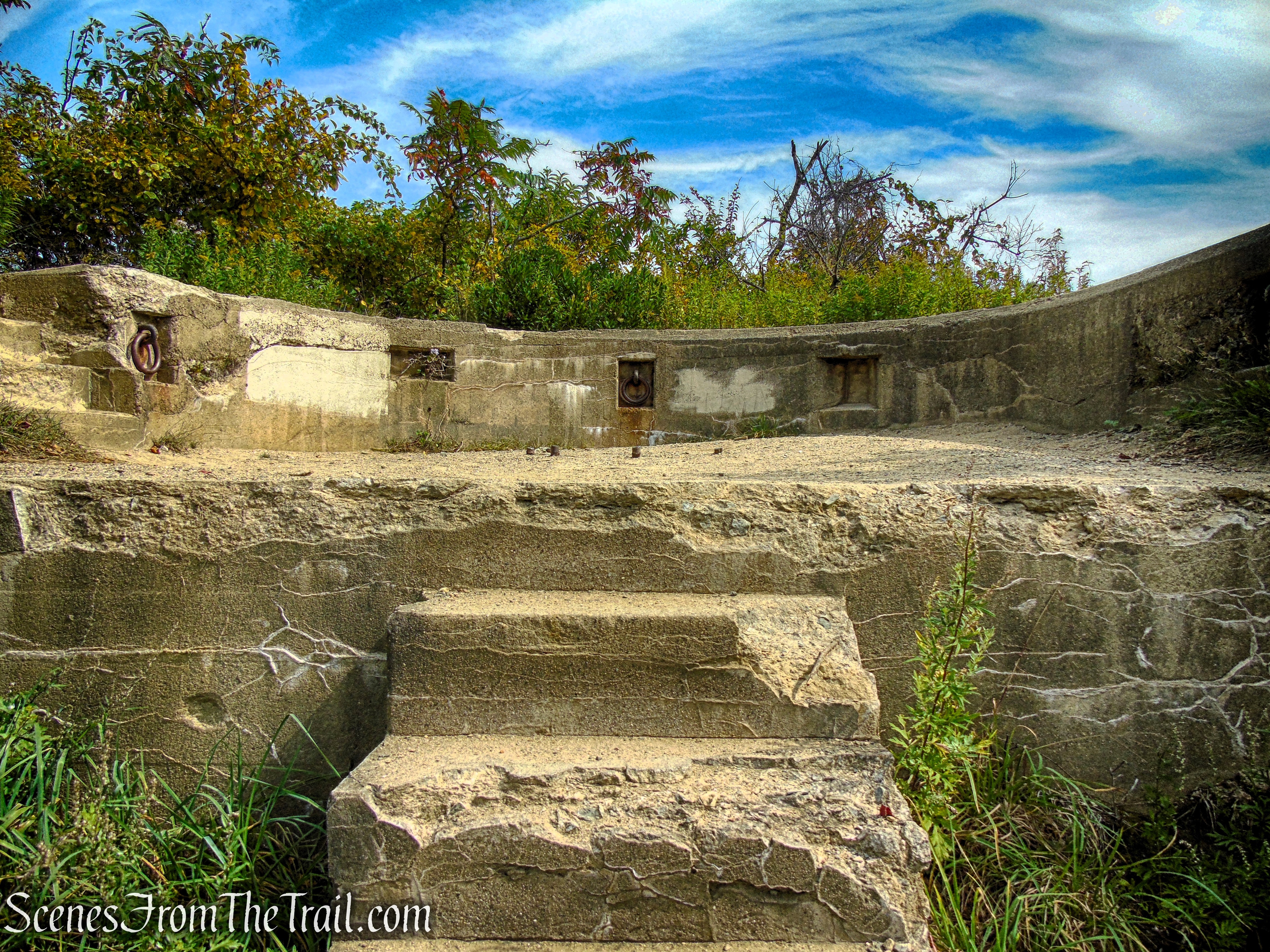
Battery Keyes – Fort Williams Park
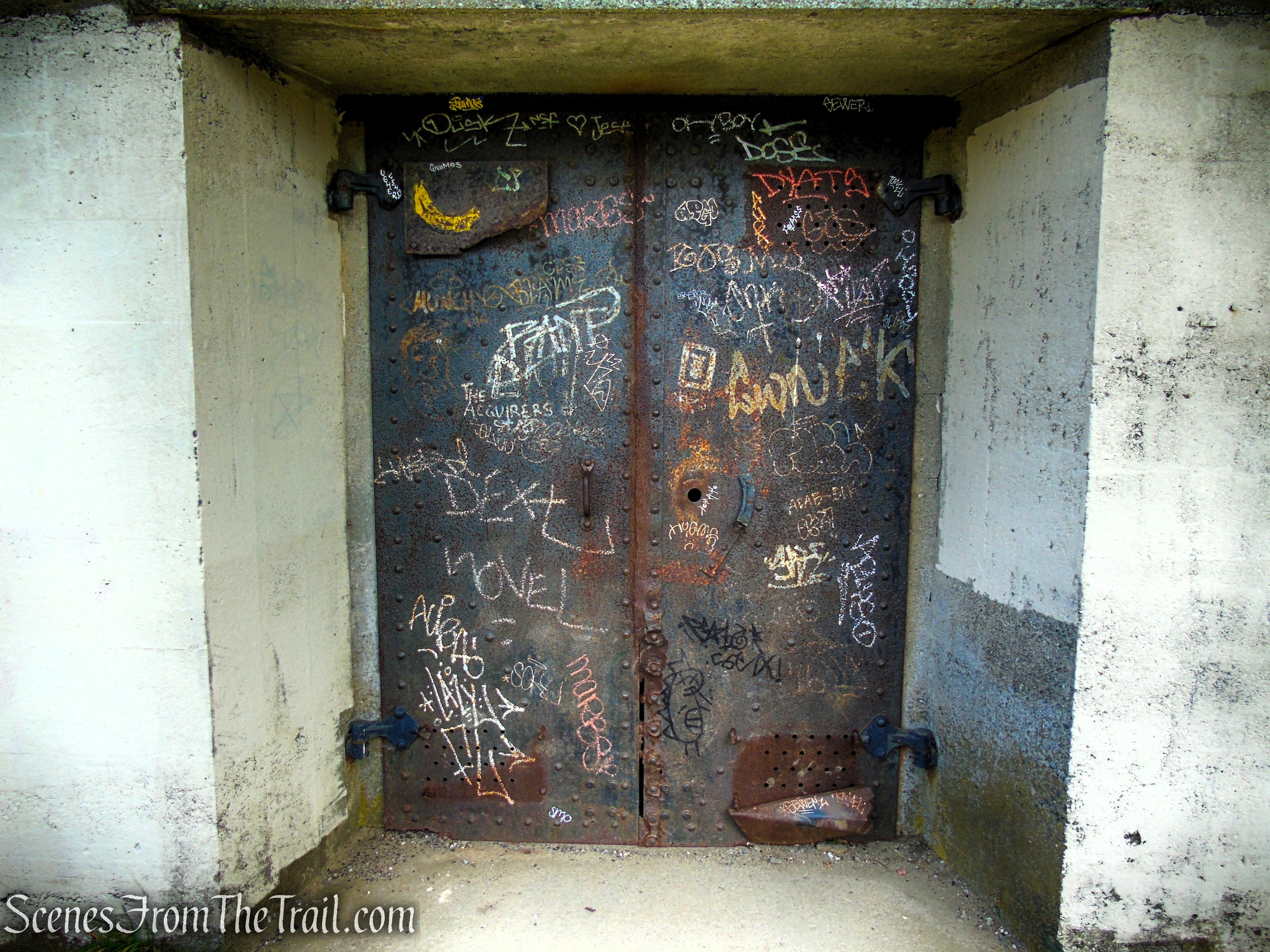
Battery Keyes – Fort Williams Park
A CRF (Coincidence Range Finder) Station was built to the right of Battery Keyes in 1921, a more modern fire control system for the bigger gun batteries at the fort.
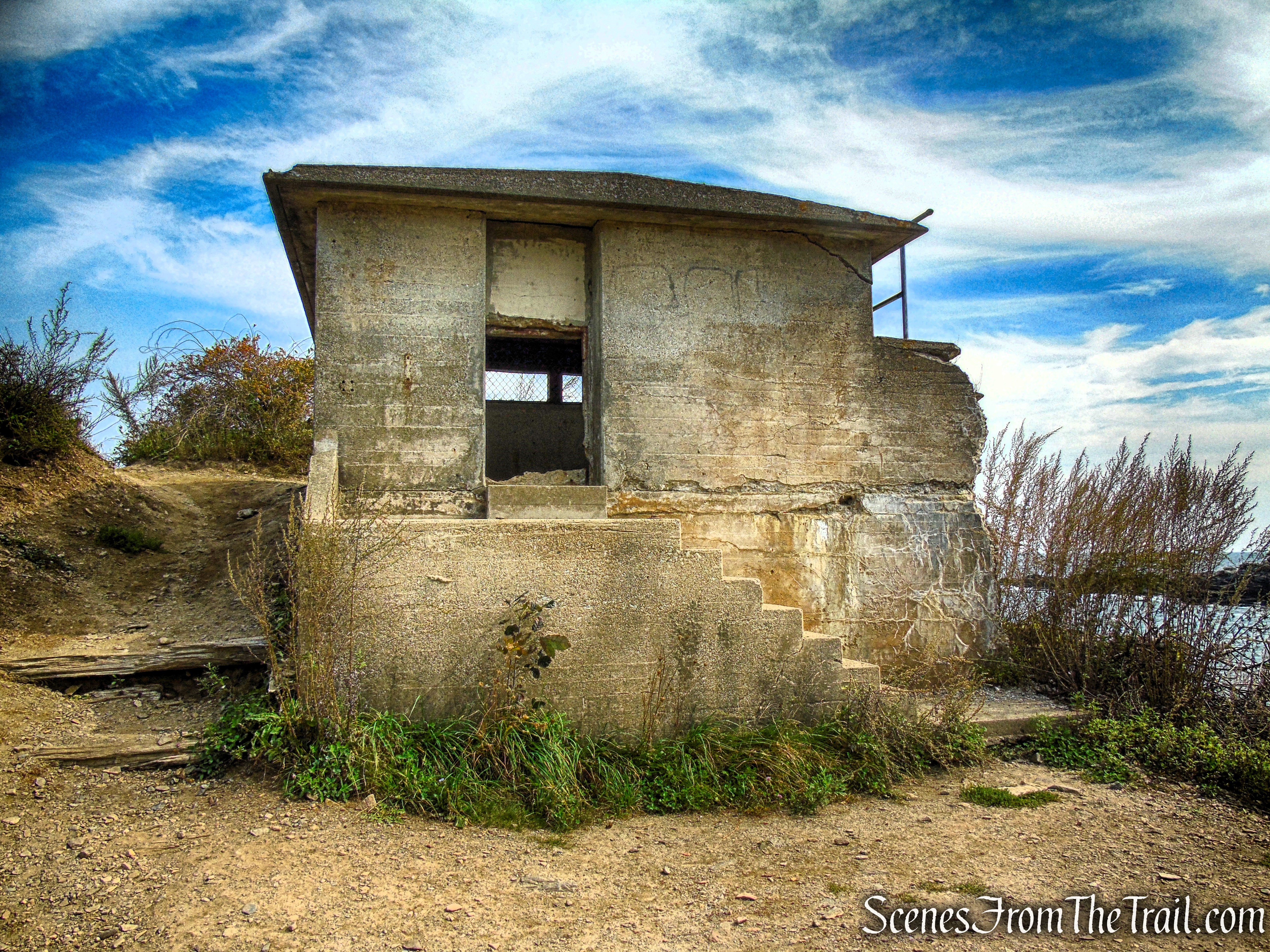
Battery Keyes – Fort Williams Park
- Central Powerhouse: This building was completed in 1905 as the central powerhouse for Fort Williams by the Quartermaster Corps. The structure was built of reinforced concrete and sited in this sheltered spot to protect it from the fire of hostile vessels.
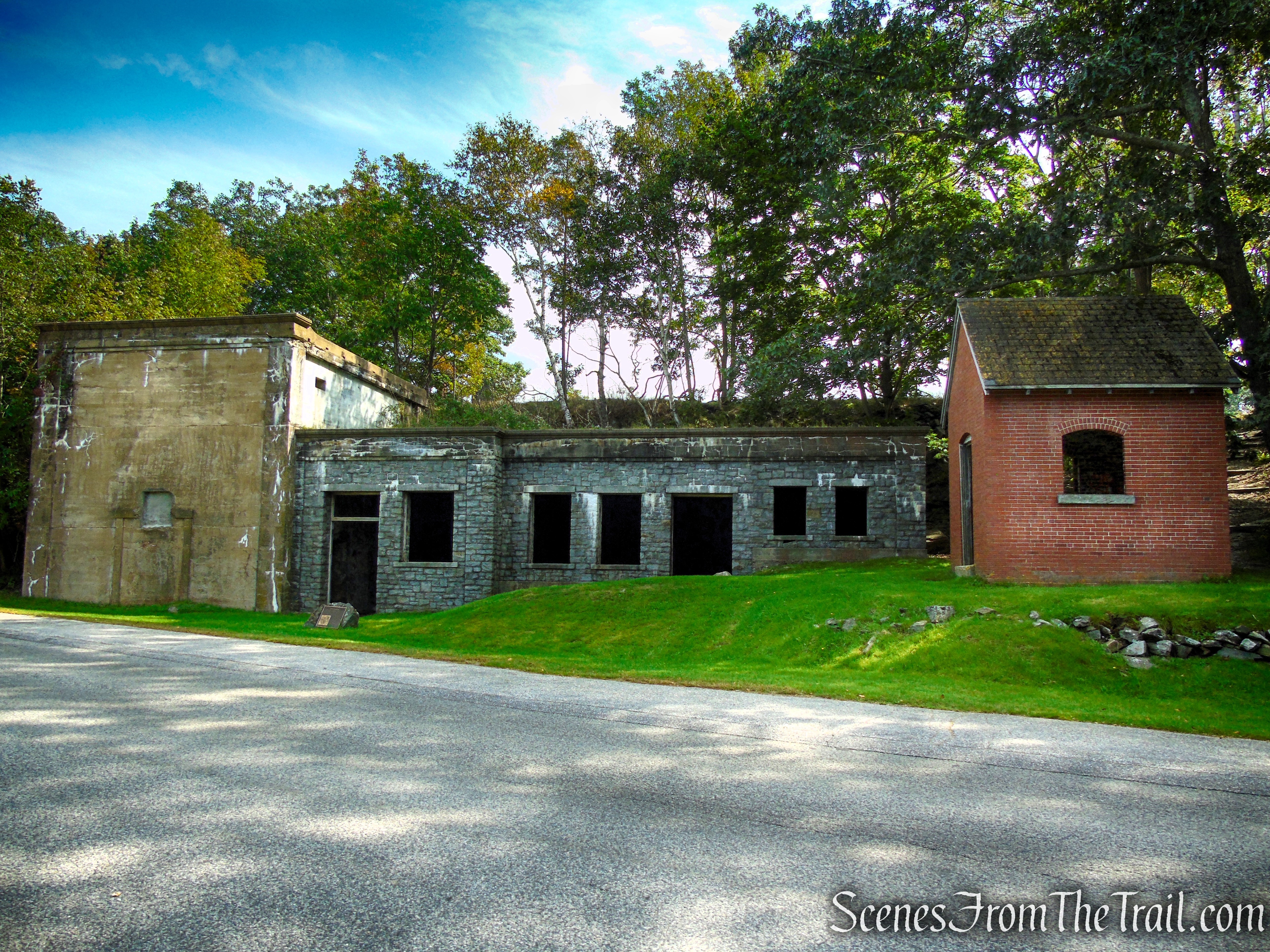
Central Powerhouse – Fort Williams Park
Inside, coal-fired boilers produced steam to turn generators to meet the electrical needs of the fort. Later, electricity was purchased from the local public utility and the powerhouse was maintained as an emergency power plant. The equipment was maintained and periodically tested so that this plant would immediately be able to provide electricity for the fort.

Central Powerhouse – Fort Williams Park
The small brick building adjacent to the powerhouse was built to house electrical transformers.
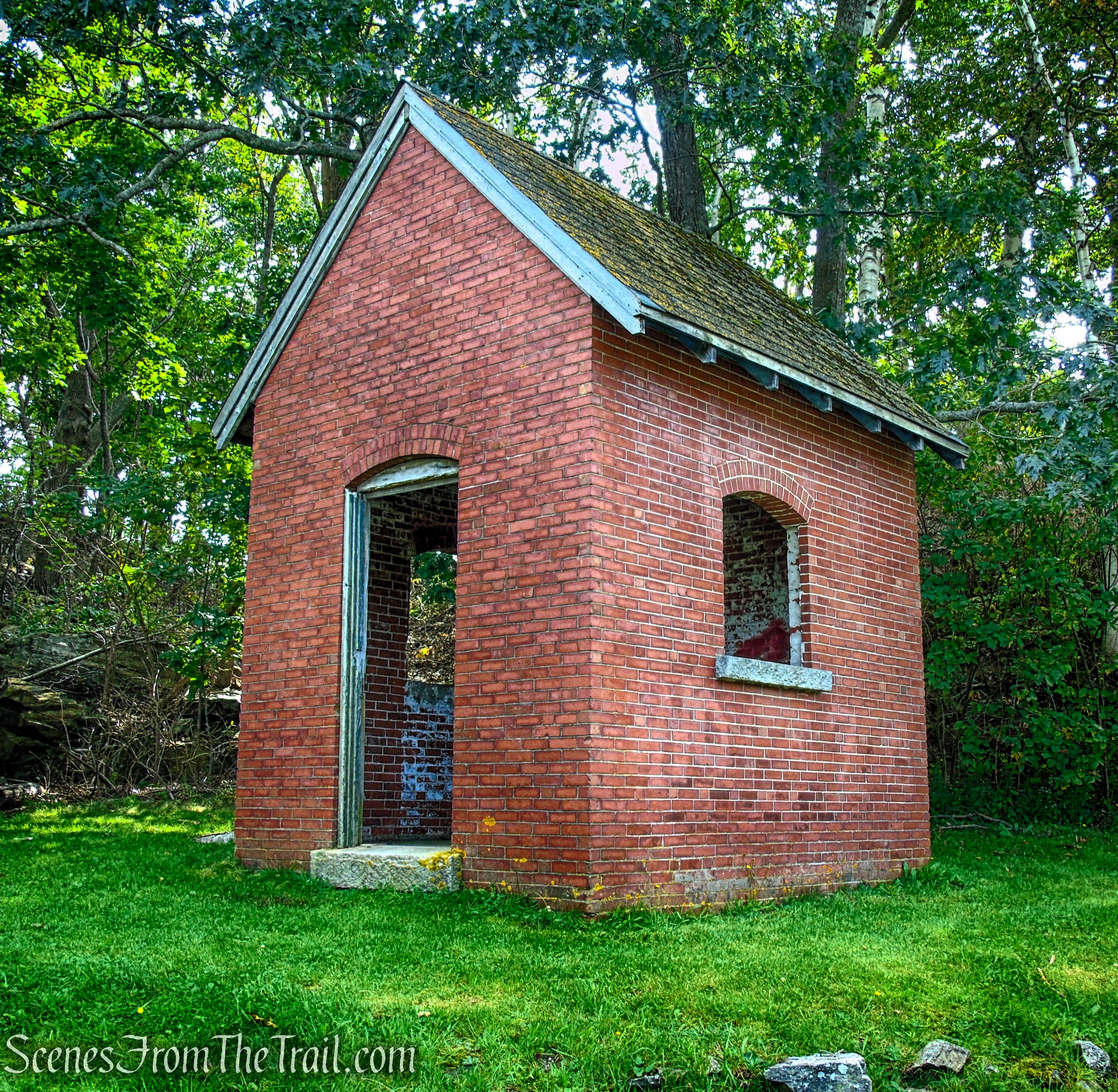
Central Powerhouse – Fort Williams Park
- Fire Station: This building was completed in 1911 by the U. S. Army Quartermaster Corps as a fire station for Fort Williams at a cost of $3,586. It was constructed of brick on a concrete foundation and the roof and tower, used for drying hoses, are slated. The building housed a fire engine, a hook and ladder truck, and two hand-drawn hose carts.
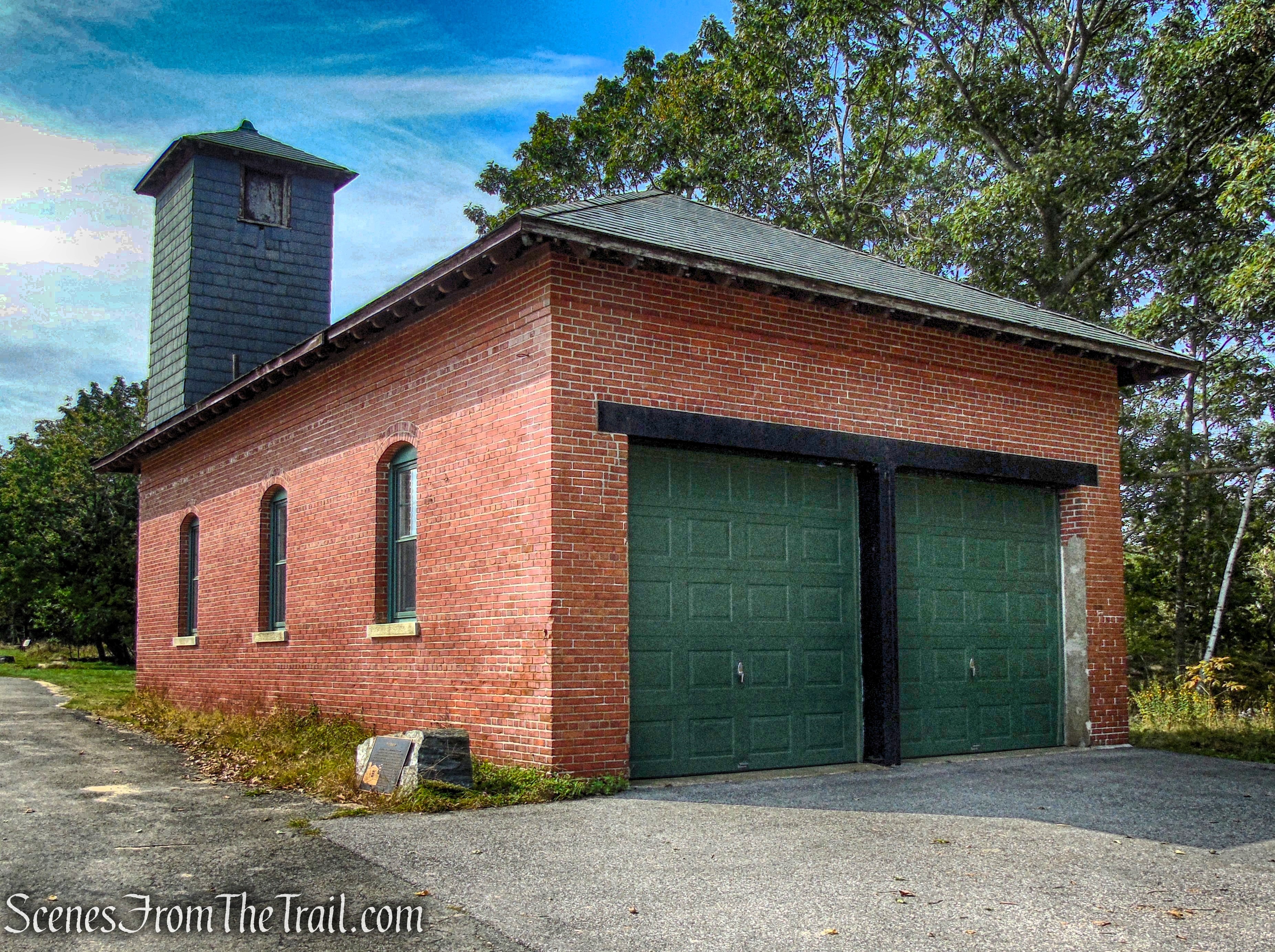
Fire Station – Fort Williams Park
Initially, enlisted men were assigned to duty at the fire station, but during the interwar period civilian personnel were hired to serve as firemen as an economy measure. The fire company was called out to deal with a number of fires. during the seventy-year history of the fort, and it also aided the Cape Elizabeth Fire Department.
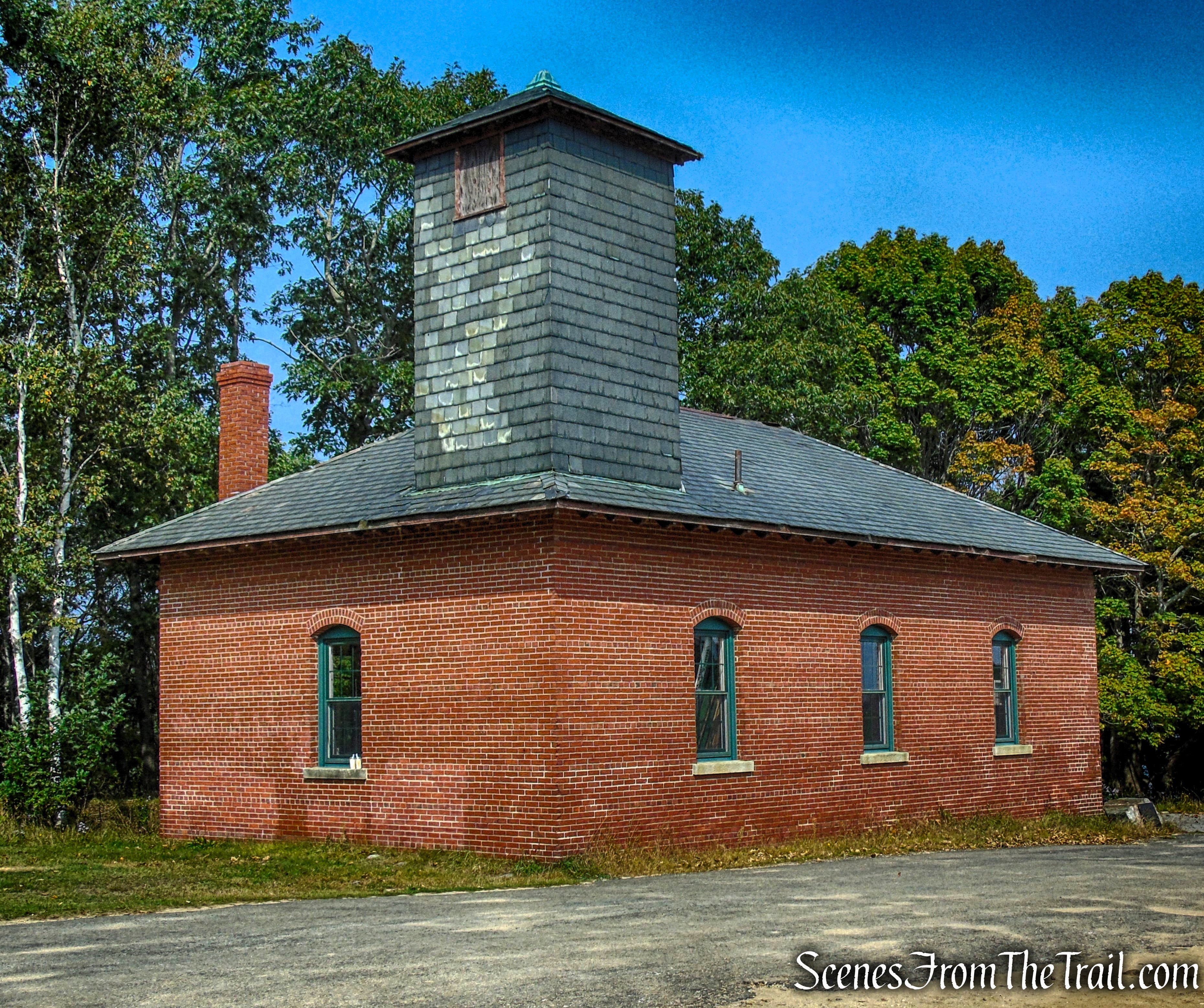
Fire Station – Fort Williams Park
There are additional points of interest that are not included here, but may be worth seeking out if you visit. Consult the park map and/or website so that you don’t miss anything.
Review:
Portland Head Light and Fort Williams Park are tourist attractions and get nearly a million visitors every year. That should not dissuade you from visiting as there is a lot to see and do here. The historical aspects of the park are fascinating and the scenic landscape of the rocky and jagged coastline make for an enjoyable time. I would recommend a visit to this park if you are in the area or taking a road trip.
Pros:
Portland Head Light, rocky coastline, Atlantic Ocean, historical features.
Cons:
Tourist attraction and can get crowded during peak times.
Sources:
- Portland Head Light – Fort Williams Park
- Historical Markers and War Memorials in Cape Elizabeth, Maine
- History of Ram Island Ledge Light
- The Wreck of the Annie C. Maguire
- Friends of Fort Williams Park